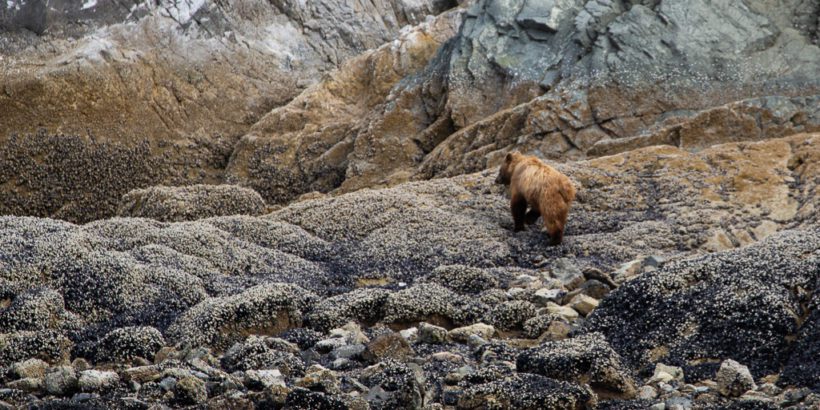Glacier Bay National Park is one of the most stunning national parks in the US.
It’s home to some surreal glacier scenery and a ton of wildlife. One of the best ways to explore the park is to take a ride on the Glacier Bay Day Tour.
In this article, I’ll tell you everything that you need to know before booking your tour on the Glacier Bay Day (boat) Tour.
Table of Contents
What is the Glacier Bay Day Tour?
The Glacier Bay Day Tour is the premier boat tour for exploring Glacier Bay National Park in Alaska.
It’s an all day affair lasting approximately eight hours and it will take you to several glaciers and give you chances to encounter the various types of wildlife that inhabit the region including bears, whales, otters, and a lot more.
Related: How to Get to Gustavus, Alaska (Glacier Bay)
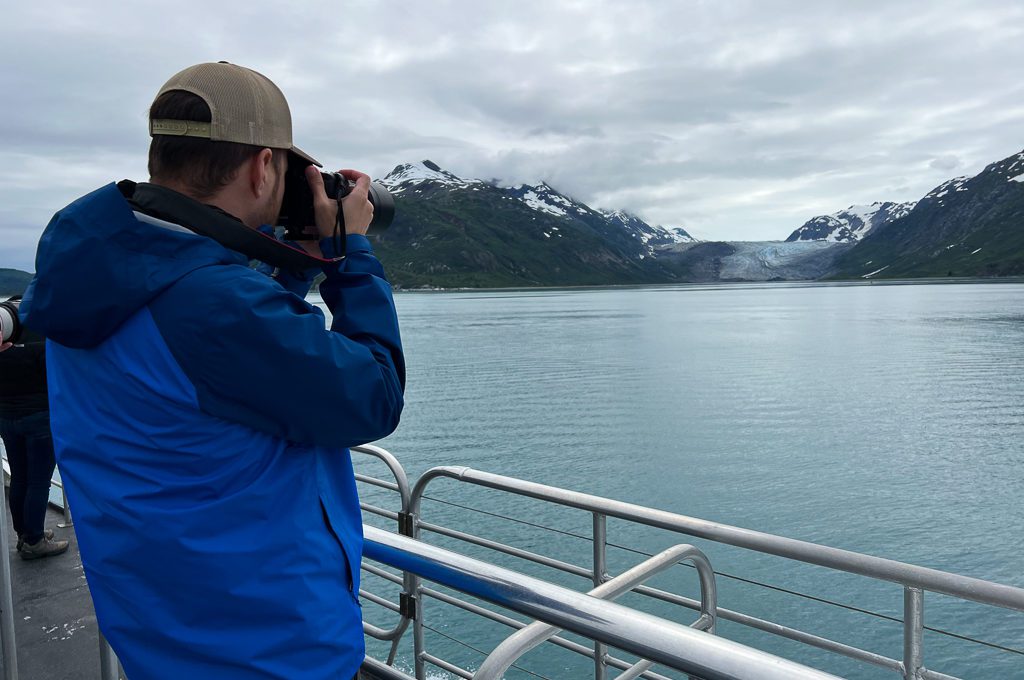
How do you book the Glacier Bay Day Tour?
You can book a spot on the boat tour online here.
Here are the prices:
- Adult: $243.74
- Child (Ages 3-12): $122.69
Note that they don’t allow changes or cancellations within 72 hours.
The boat departs from the Bartlett Cove public dock which is located just outside of Glacier Bay Lodge.
While you don’t have to stay at the lodge to partake in the tour, it’s very convenient if you can book a stay there. I really enjoyed my stay at the lodge and you can read all about it here.
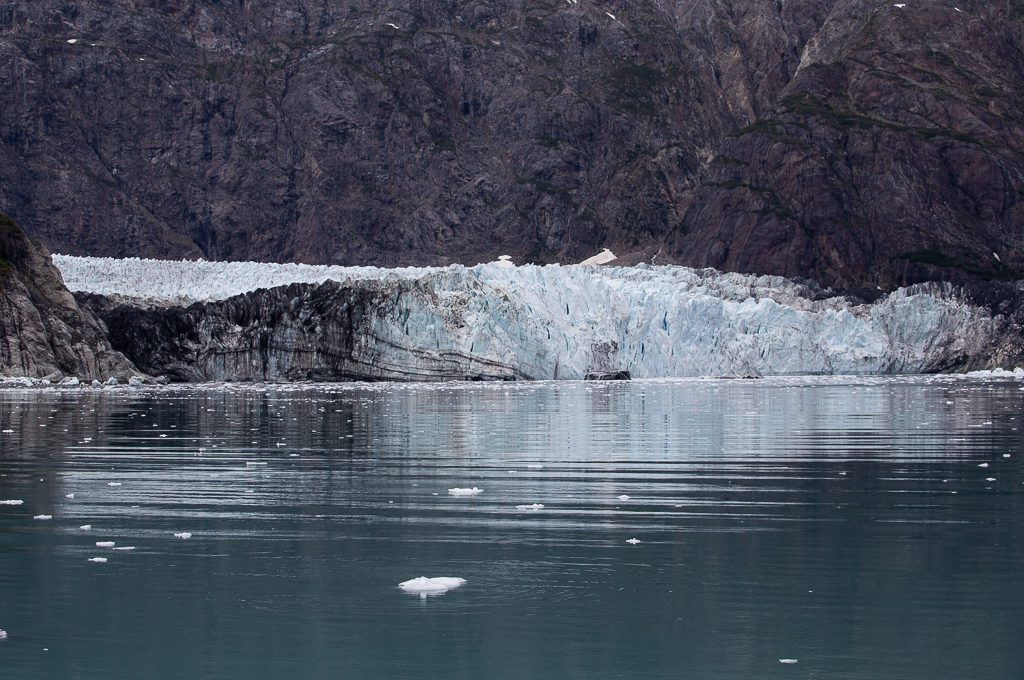
Glacier Bay Day Boat Tour Experience
Boarding
Boarding begins at 7AM and the boat will depart at 7:30AM sharp.
I would suggest that you get there right on time at 7 AM.
That’s because they will begin the boarding process then and allow you to choose your seat which will probably be where you will be seated the entire time.
Related: Mendenhall Glacier Ultimate Guide: Tips for Exploring
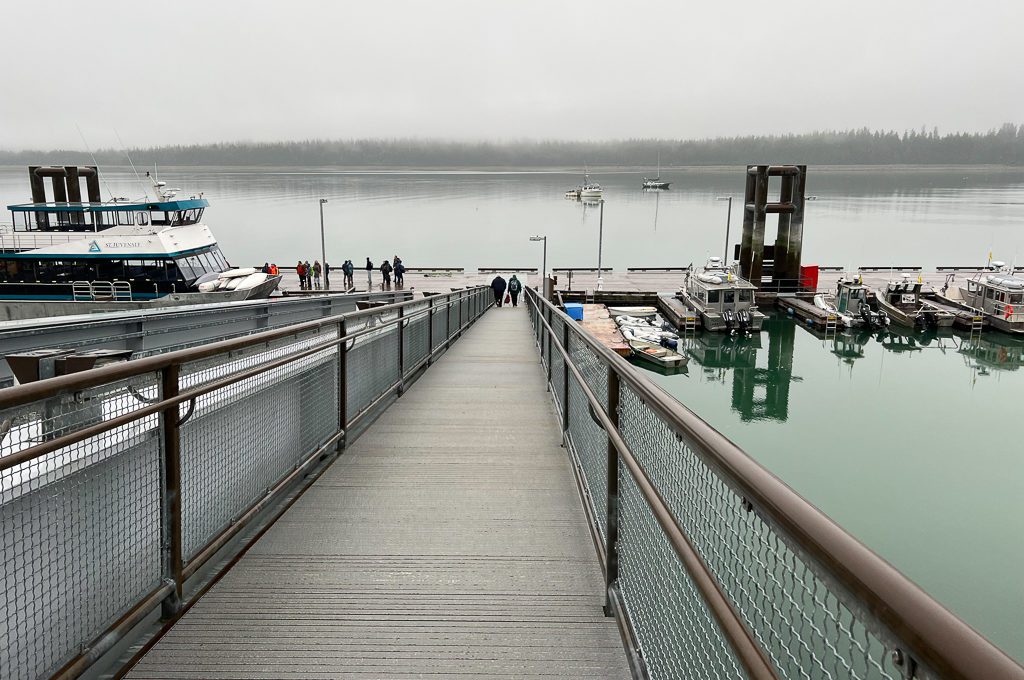
We chose to go directly upstairs and lock down a seat but there really aren’t any bad seats.
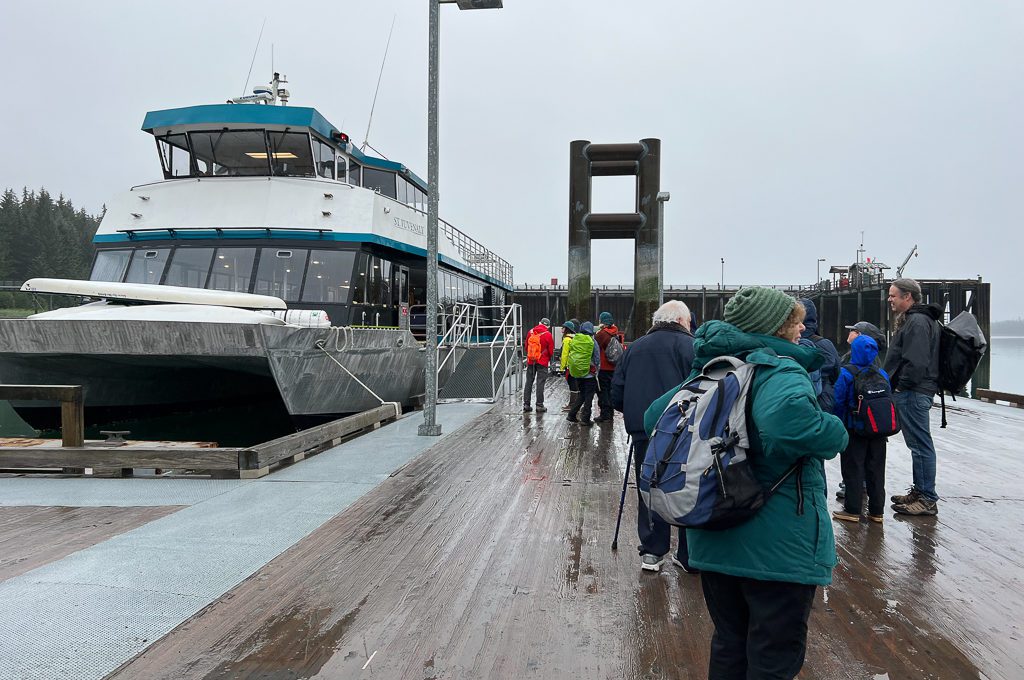
Cabin
There are two cabin levels and both have indoor seating sections with large windows. I believe the seats are even heated.
The bottom level is larger than the top level and is where you will find the concession stand, ranger table station, and the bathrooms.
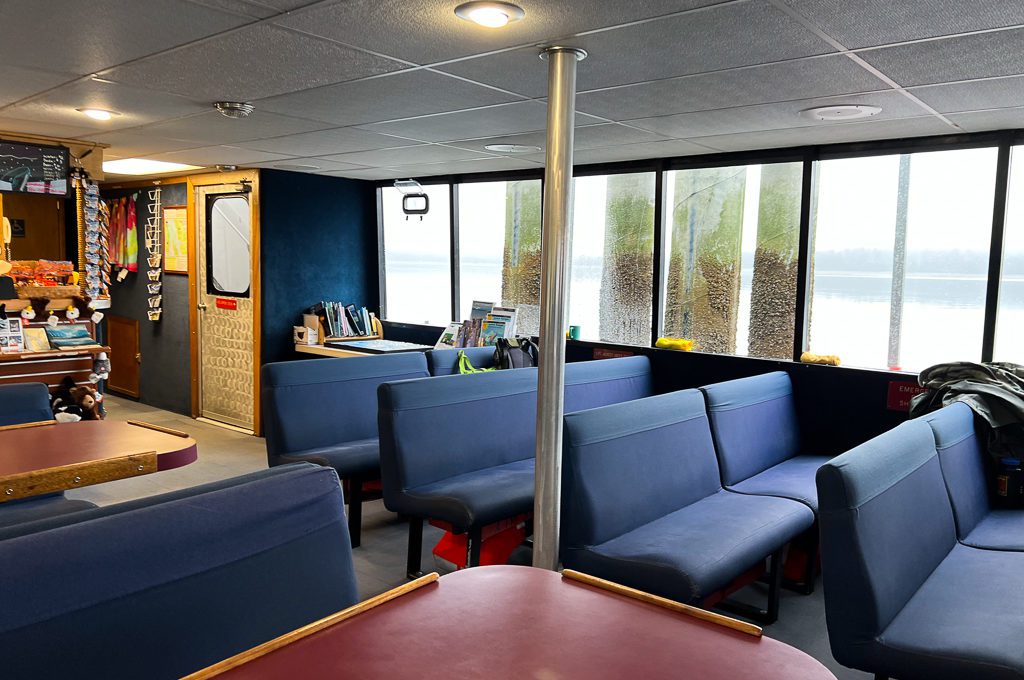
Our catamaran had three one-person bathrooms, which come with a sink and hand dryer.
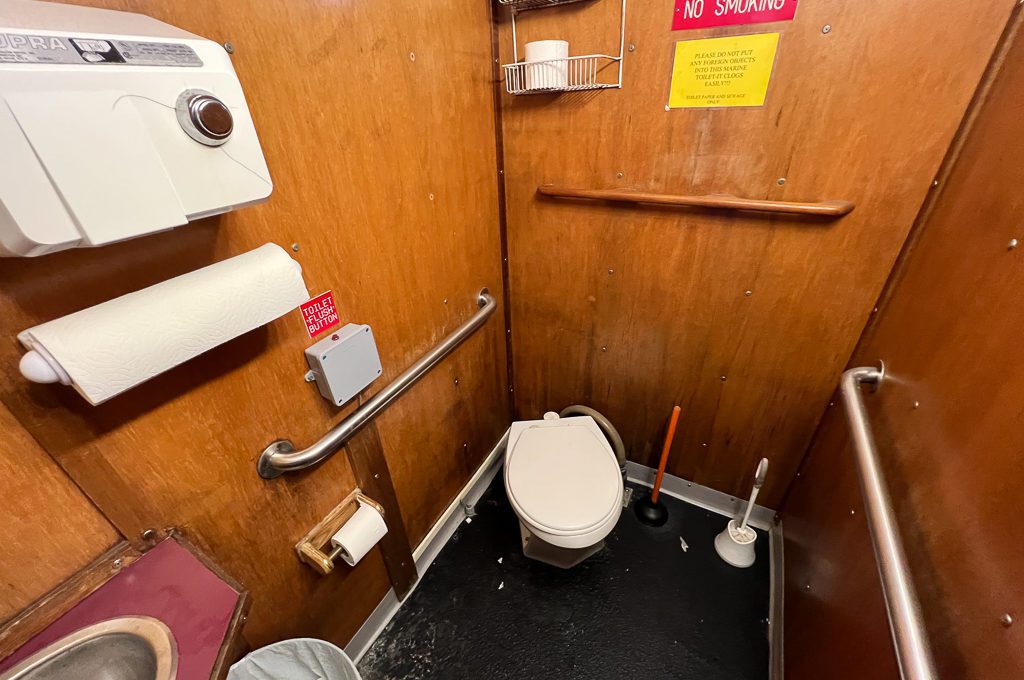
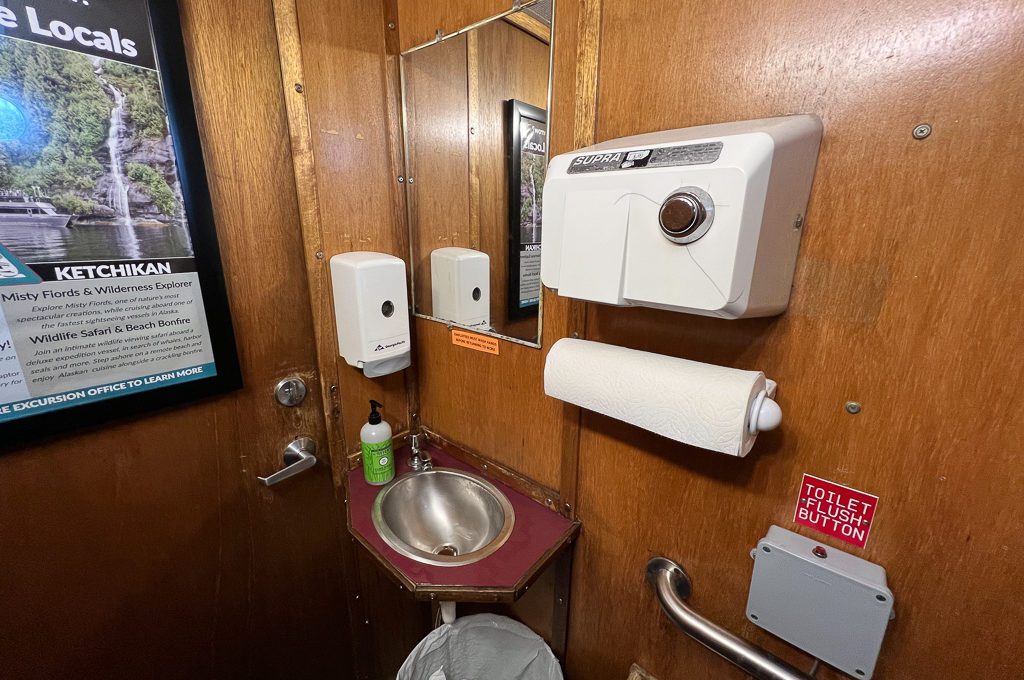
The concession stand offers free tea, coffee, and hot chocolate and you can purchase soda along with alcoholic beverages.
They also have a variety of snacks like chips, chocolate bars, and a host of souvenirs. Prices are listed below.
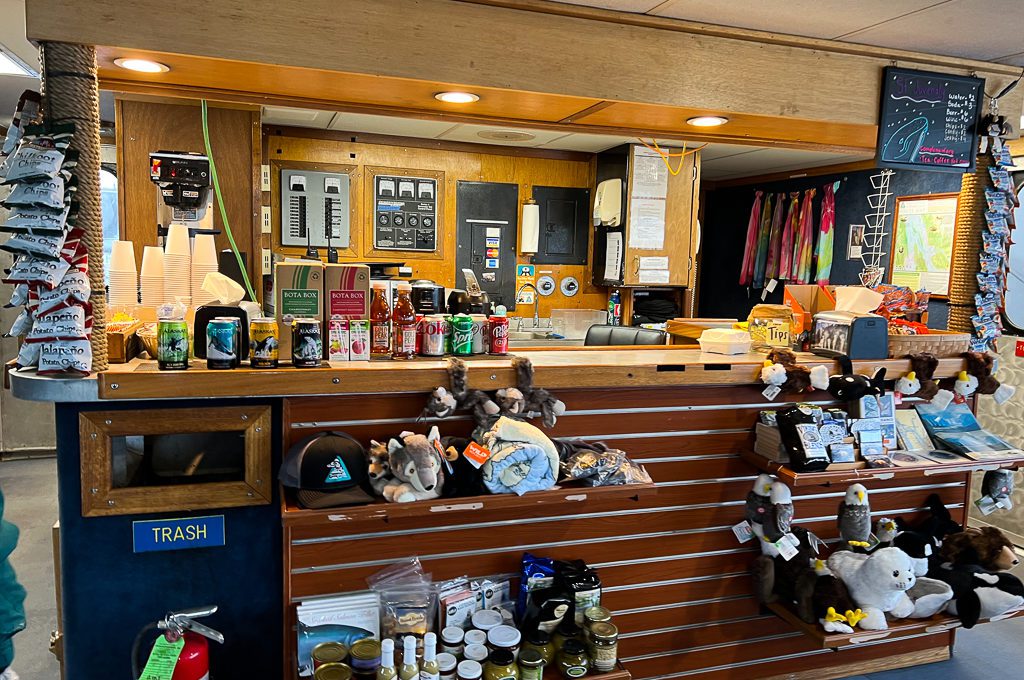
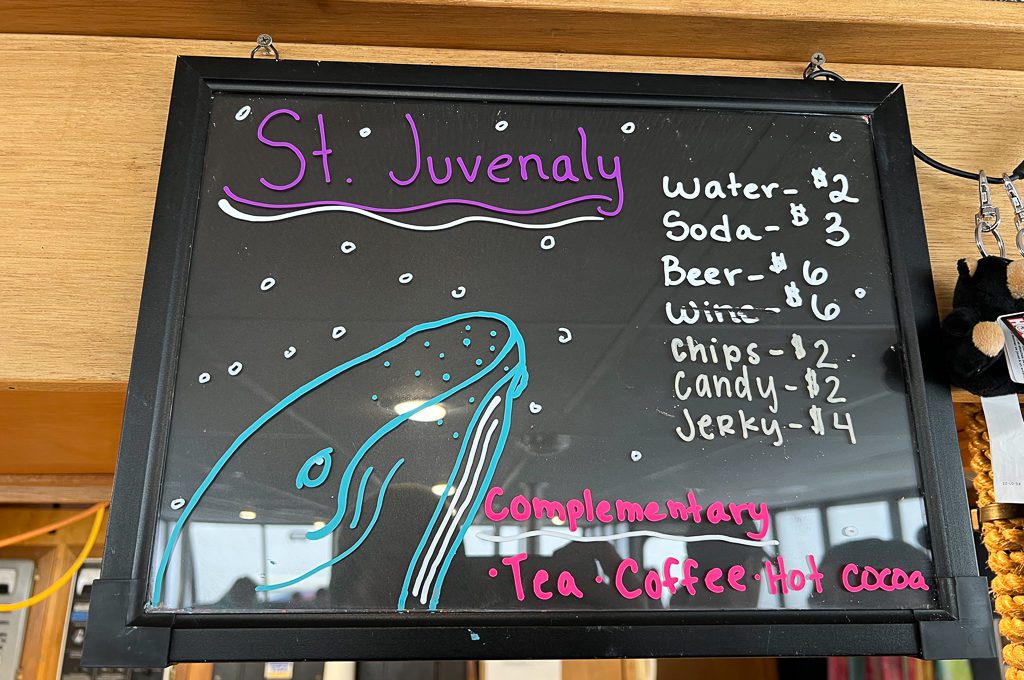
The bottom deck has a small dedicated ranger station table where you can find maps and other resources. It’s really helpful to follow along with the help of one of their maps so you can know what you’re looking at.
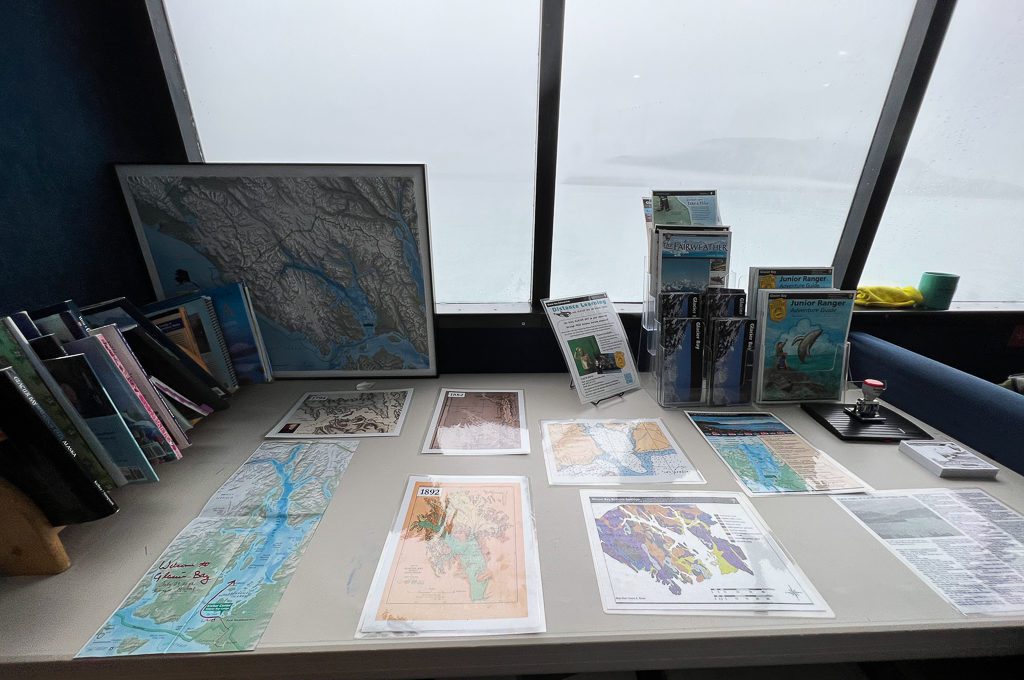
Don’t forget to get your passport stamp!
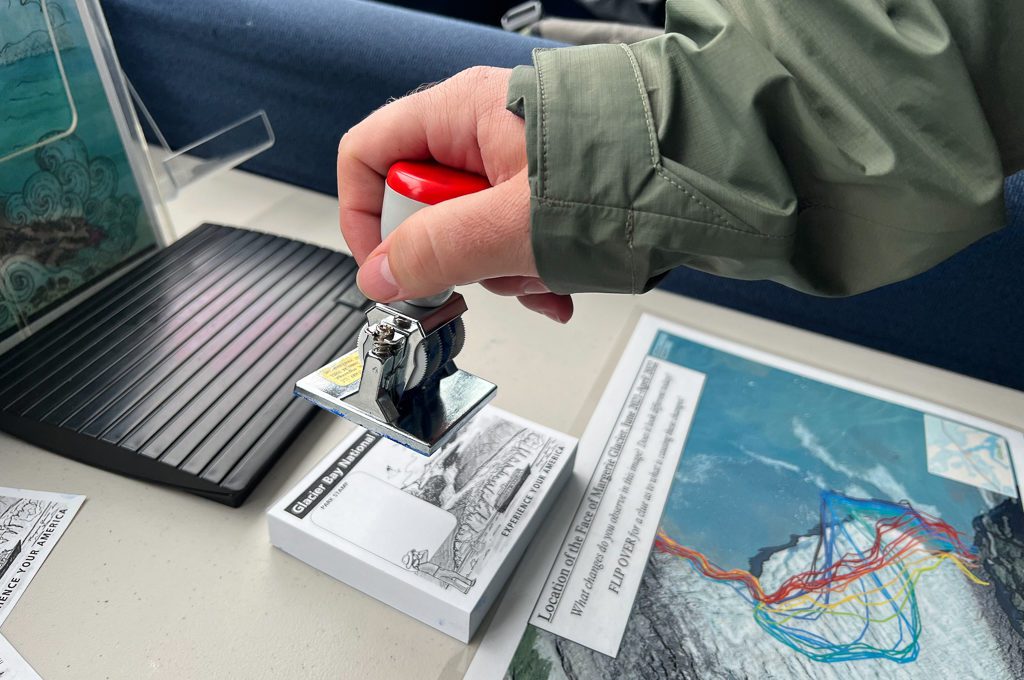
As for the views, you should be able to get some good views from downstairs. Each window has a towel to help you wipe it down in case things get fogged up which will likely happen.
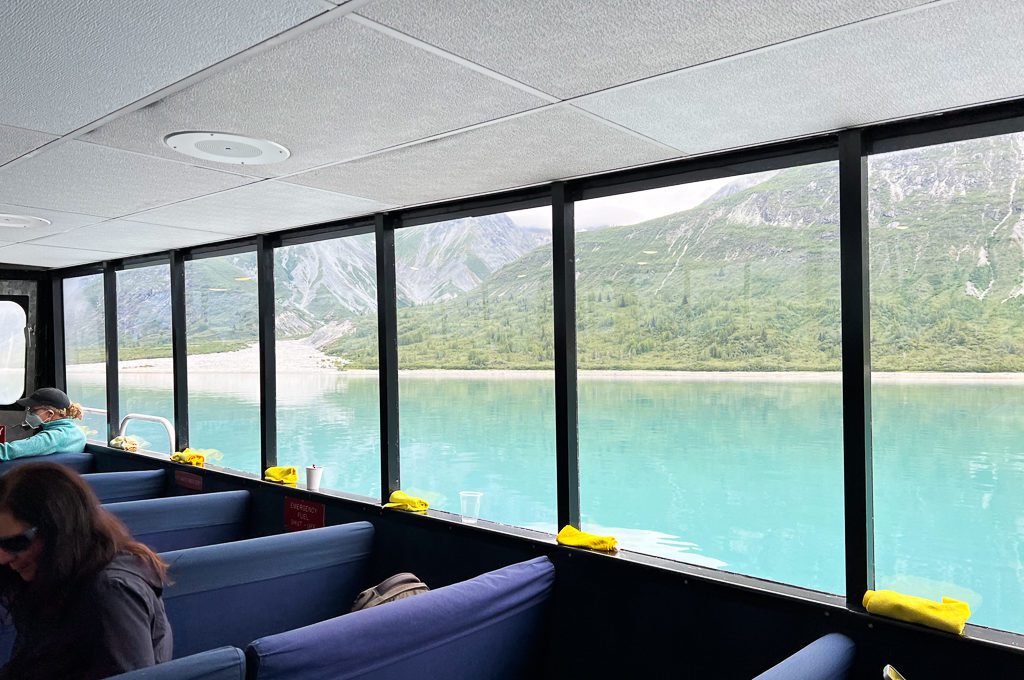
The top level is where we spent most of our time.
It’s a smaller cabin but I preferred the higher vantage point for spotting wildlife.
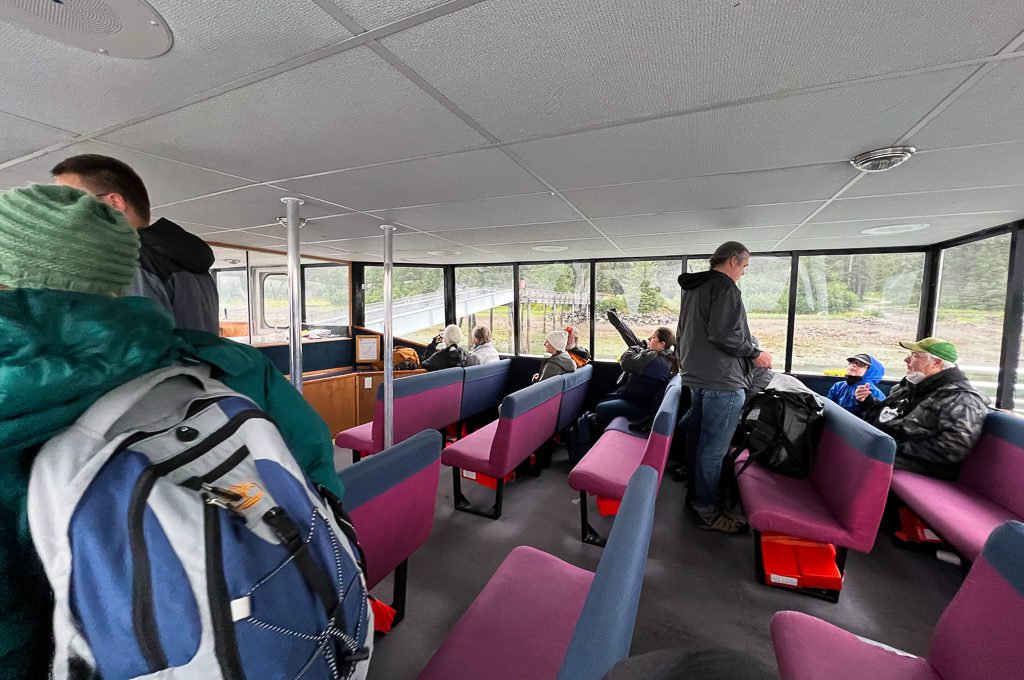
Whenever we spotted something interesting, a lot of passengers from downstairs flooded the viewing deck so being upstairs just makes it that much easier to get a good front-row seat of the action.
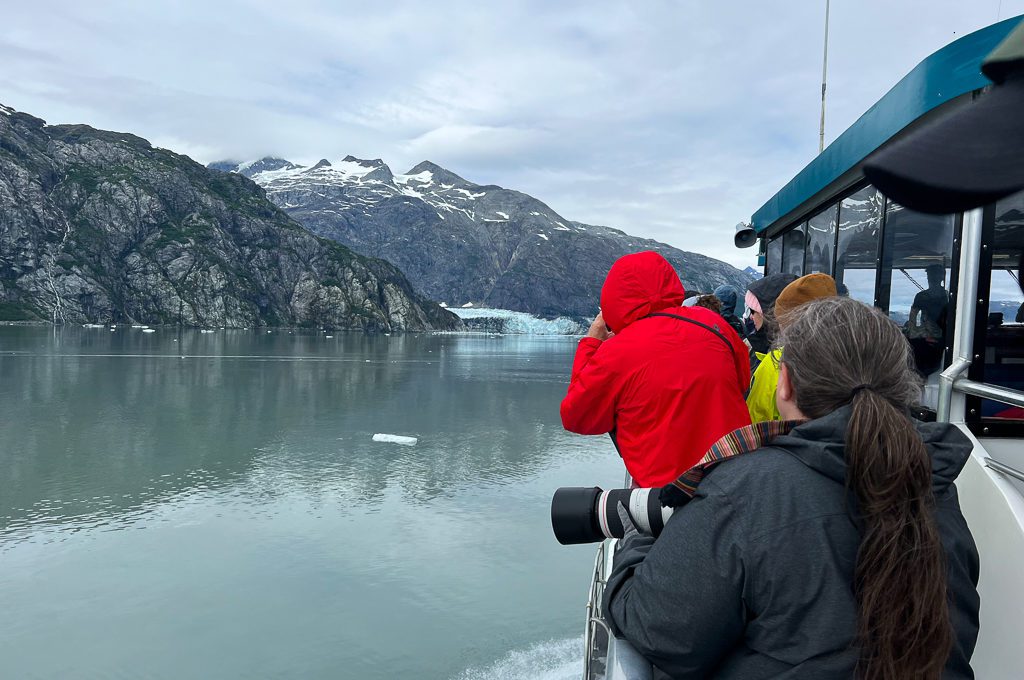
Weather & water conditions
Weather can be an issue on these tours.
Once we started, it didn’t look like we would have a nice day on the water. Visibility was very limited and rain showers made it uncomfortable to be outside.
But things eventually opened up a good amount so don’t get too discouraged if the day doesn’t start off very nice.
Water conditions were great and I think they are usually pretty calm because you are not in the open ocean.
If you are prone to seasickness you might still want to take some Dramamine but chances are you will not have a bad time.
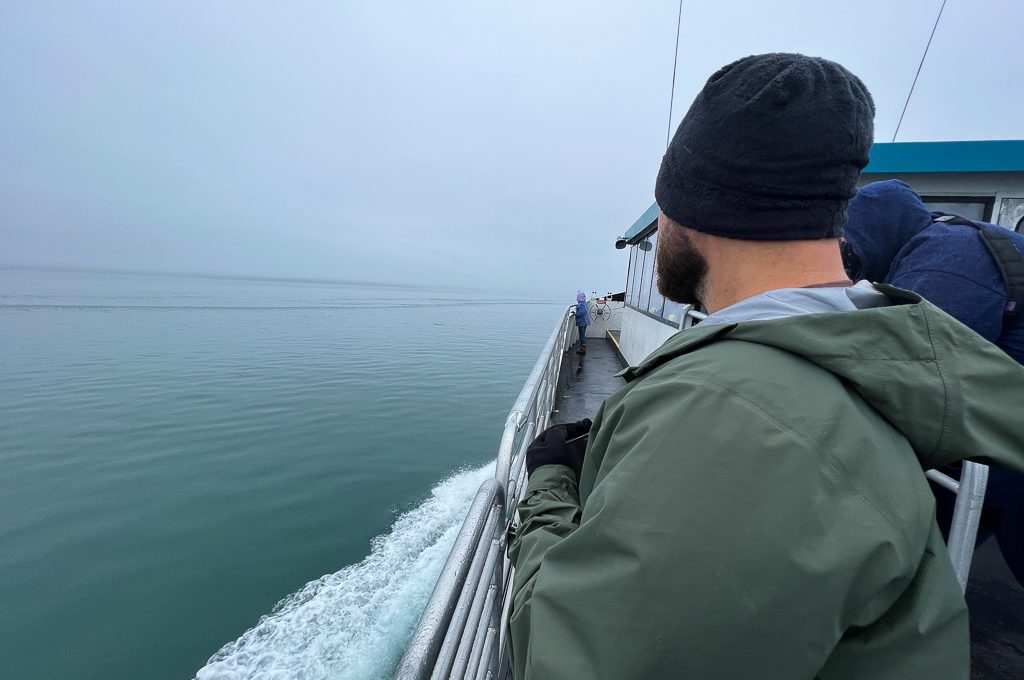
Wildlife
Even with low visibility we spotted some whales and sea otters.
In fact, the first whale we saw came about 10 seconds into the tour which was a nice surprise.
As for the sea otters, you can expect to see dozens and dozens or perhaps hundreds of these fury animals on your tour. Their population has made a huge rebound over here.
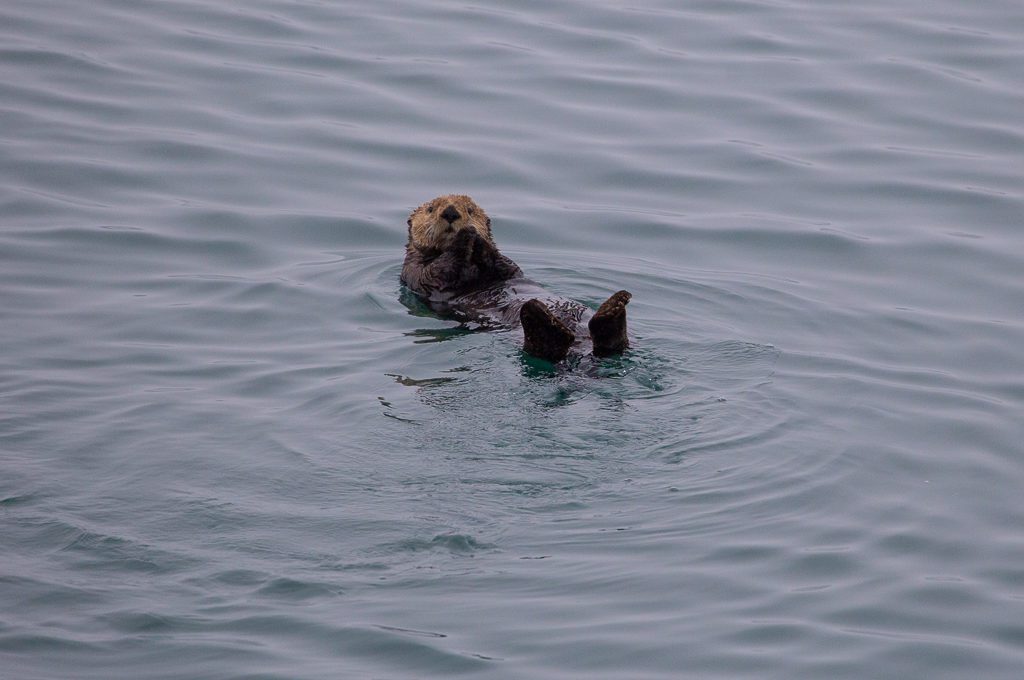
Sometimes otters are bobbing away by themselves but other times they hang out in “rafts” with as many as a dozen or more otters together.
It can sometimes be a little difficult to distinguish kelp from the otters but usually the big clown feet sticking up in the air is a dead giveaway that you’re looking at an otter.
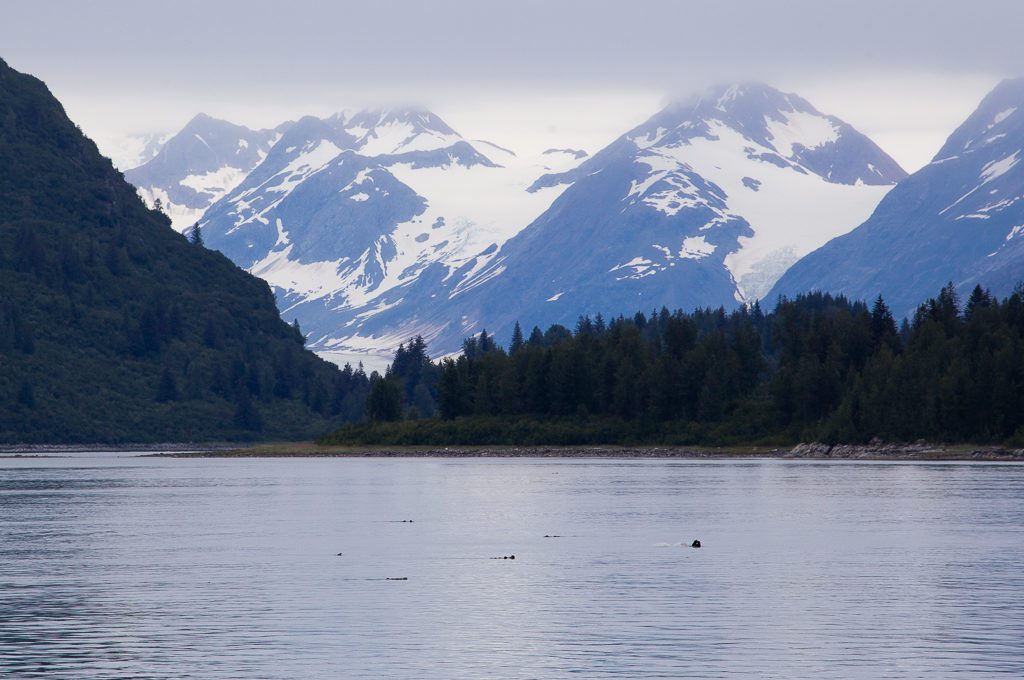
Shy otters will quickly dive below the surface when you approach but other curious otters will hang out on the surface giving you a great view.
Take a close look at them and you might see a smaller baby otter floating on top of a mama.
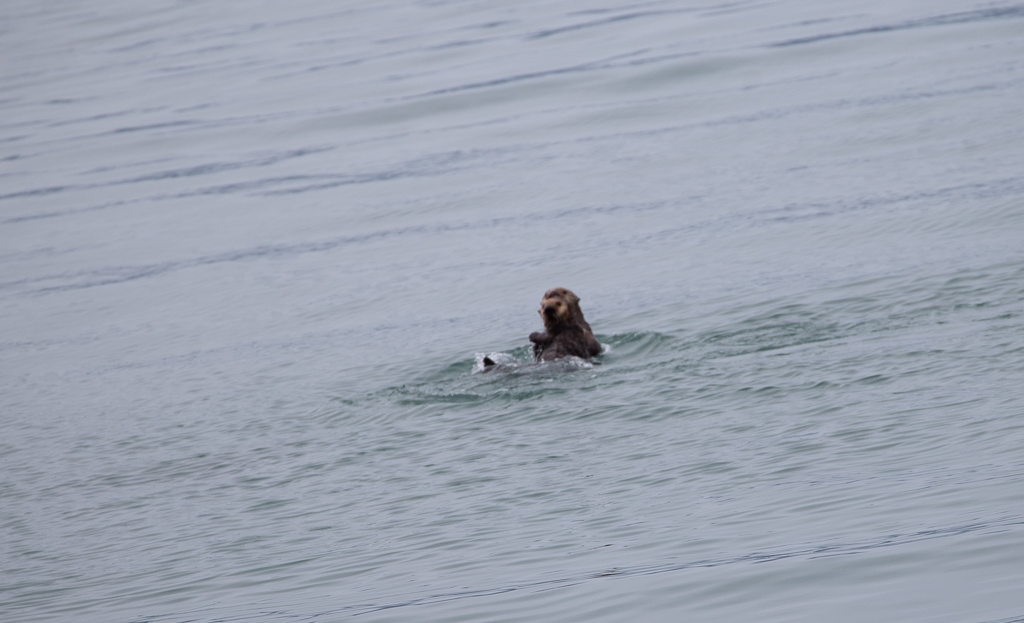
Things started to get exciting as we approached South Marble Island.
This is when visibility started to get a little bit better and when we really got a close look at some of the wildlife. So have your camera ready.
You’ll find a ton of stellar sea lions hanging out and jockeying for position on the rocks.
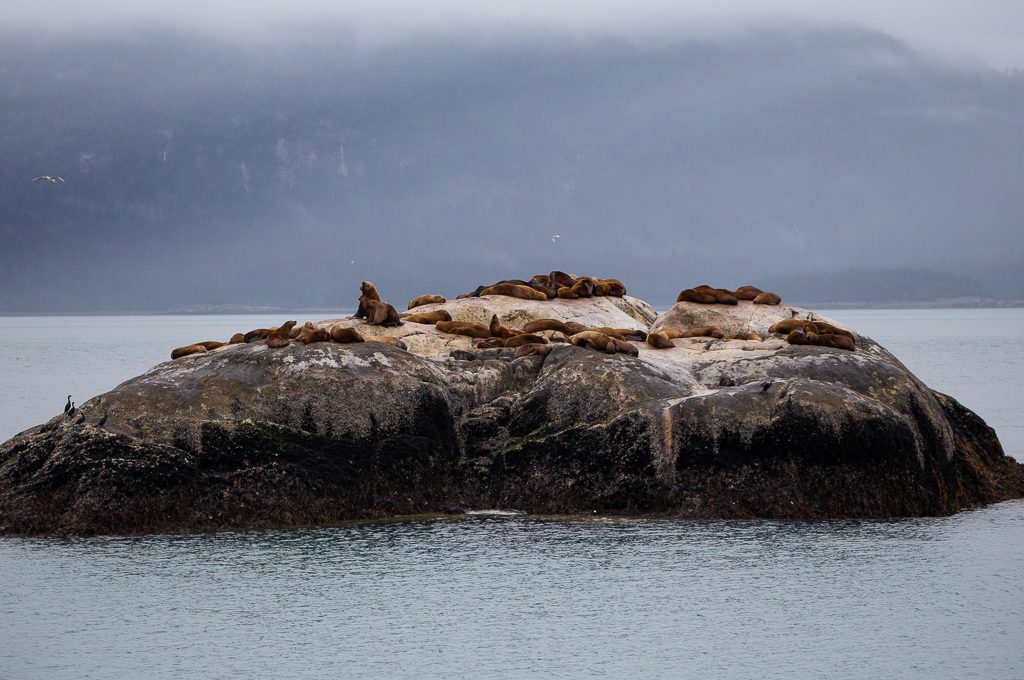
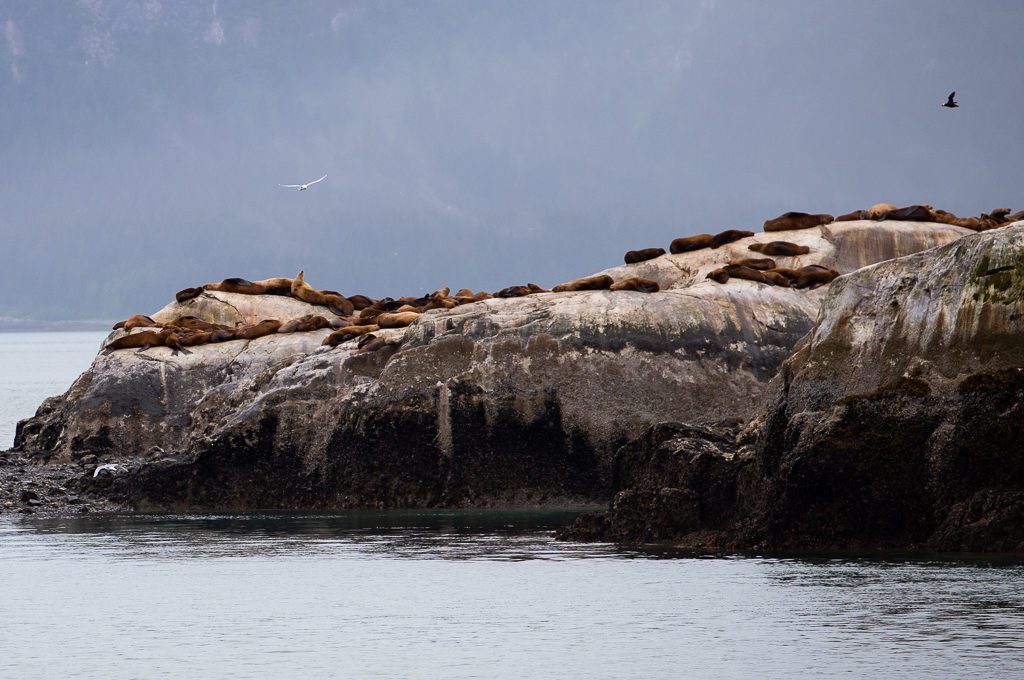
It’s also a great place to catch puffins which will likely be on the water’s surface. They have two types of puffins out here and we saw the “Tufted Puffins.” (The Horned Puffins are more rare to see.)
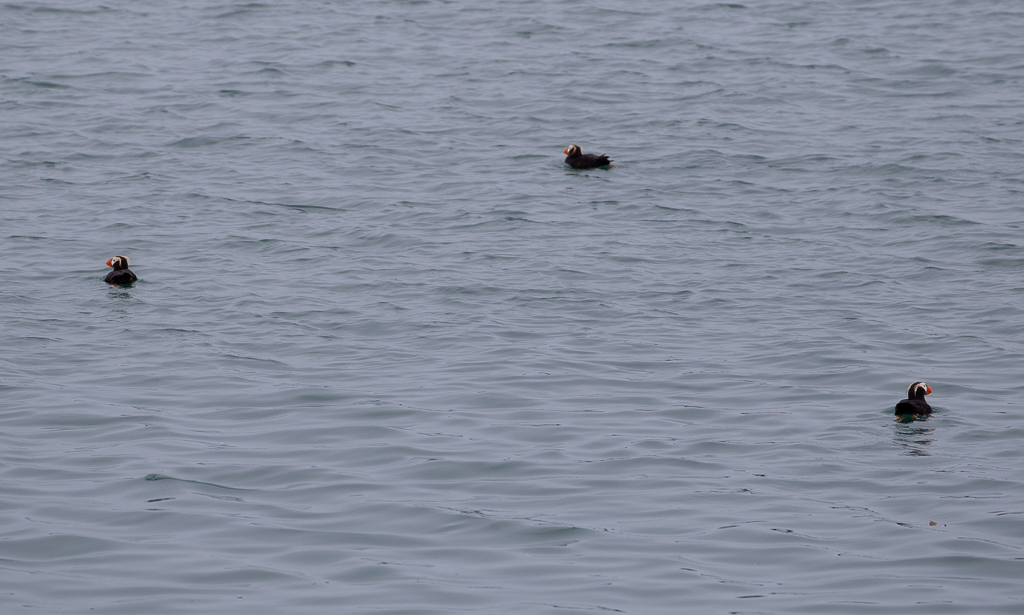
Take a close look at these birds and you might see some with a mouth full of fish!
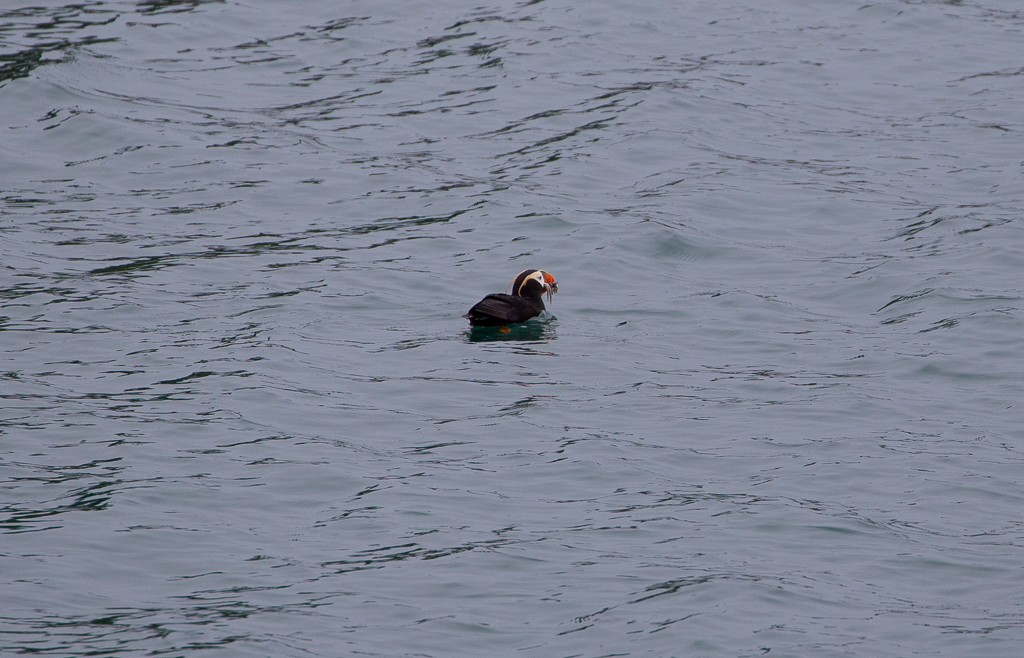
Equally entertaining is watching them takeoff. Not the most graceful as they are better swimmers than they are flyers.
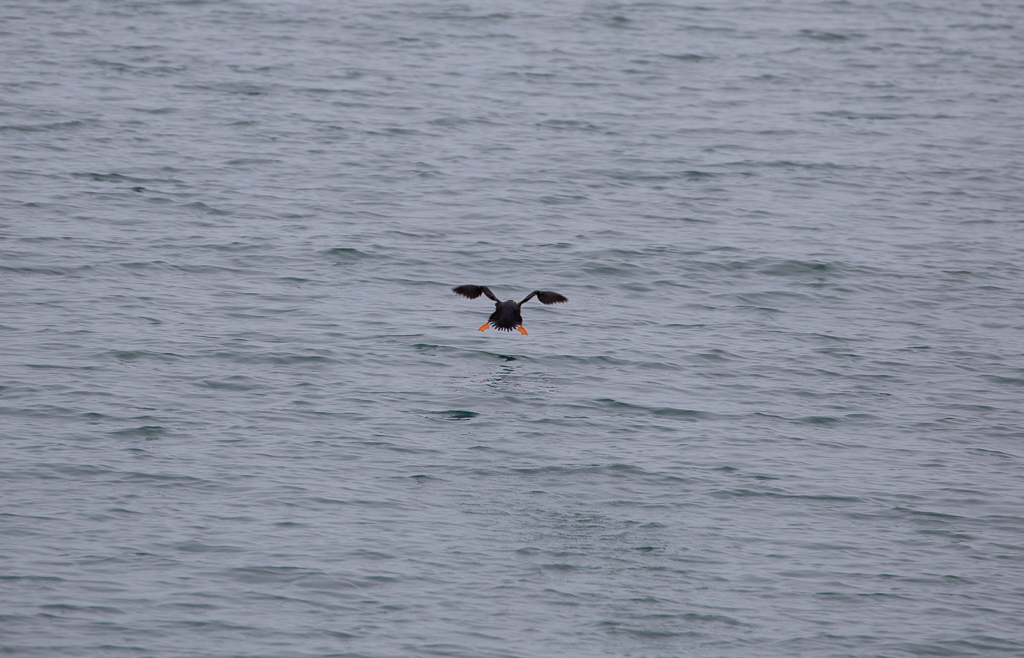
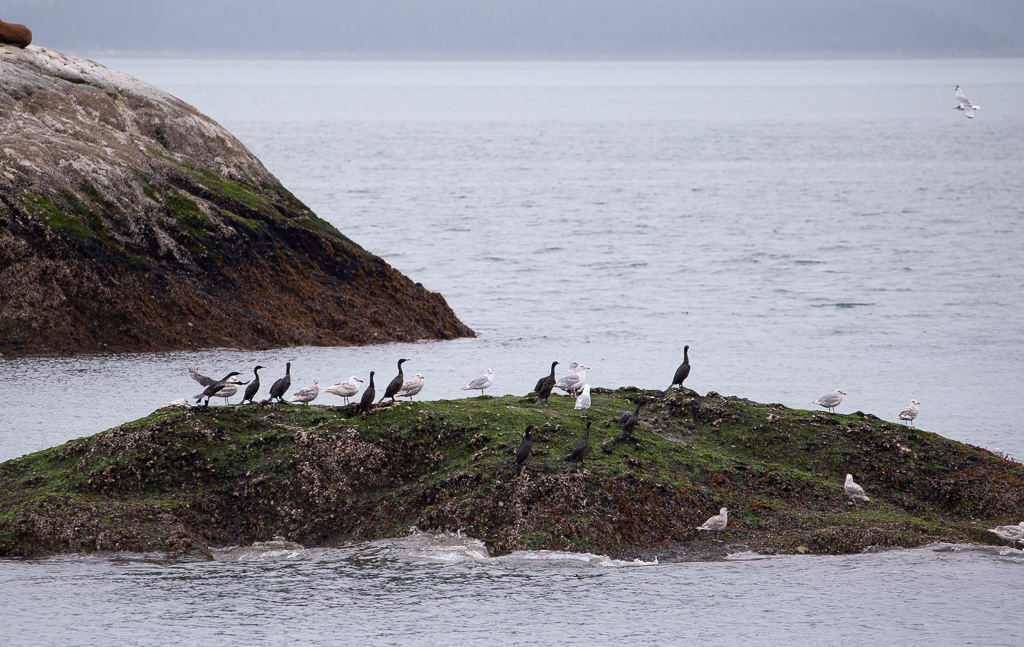
The eagle-eyed park ranger and supporting staff is always on the lookout for wildlife during your tour.
You can stand near them to help you find the wildlife but they will also broadcast over the speaker system when something cool is found.
One instance where they really helped us spot wildlife is when we encountered the mountain goats at Gloomy Knob which were perched high on the grey rocks. You can see two of them in the middle of the photograph below.
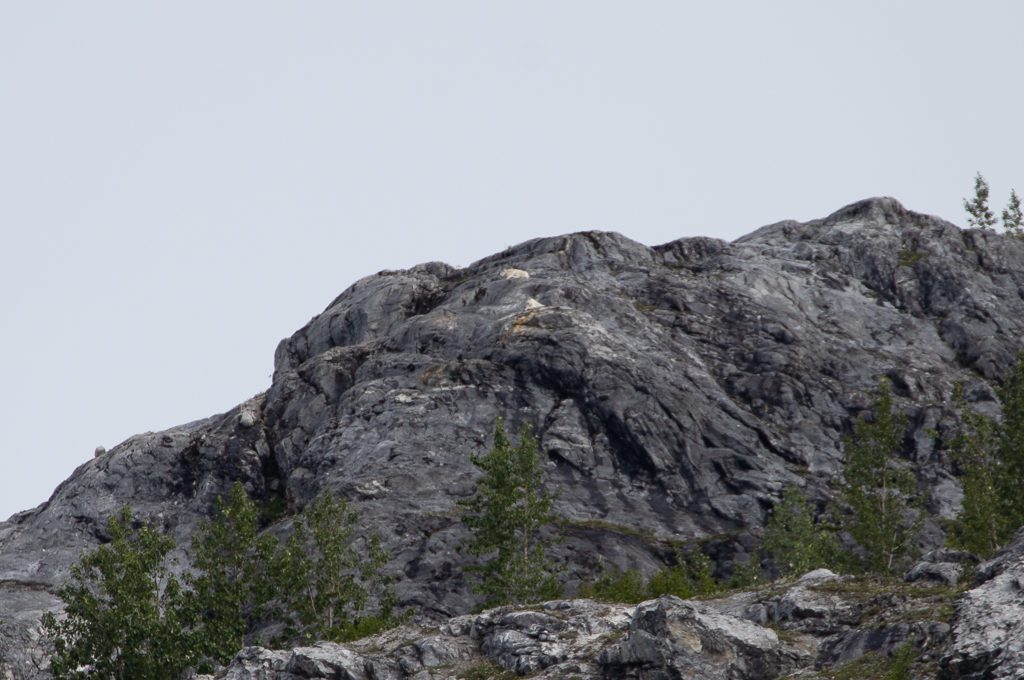
It didn’t take very long for us to spot our first bear which was a beautiful brown bear roaming the intertidal zone. A pretty unbelievable site.
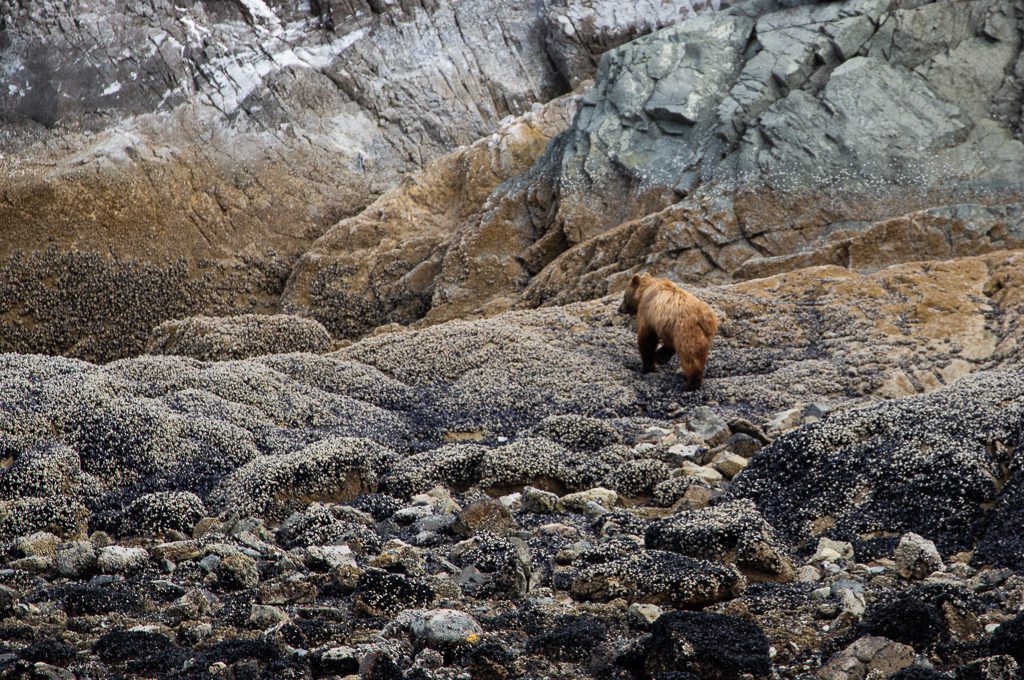
This is also when I realized just how covered the intertidal zones were with marine life. I had never seen so many sea stars in my life and many of them were quite huge.
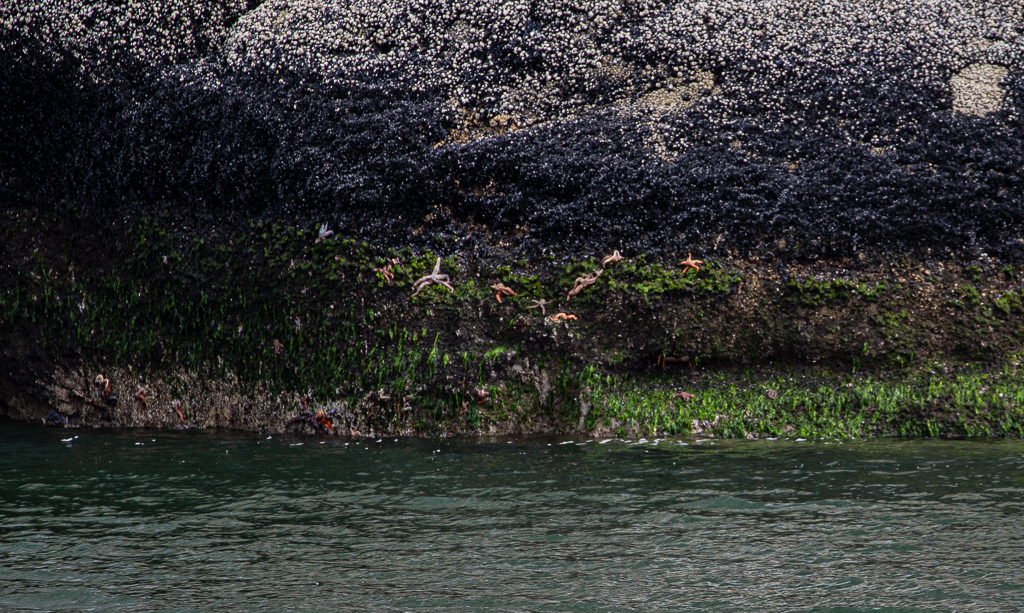
After the bear sighting, we ended up seeing another brown bear although this one was farther away.
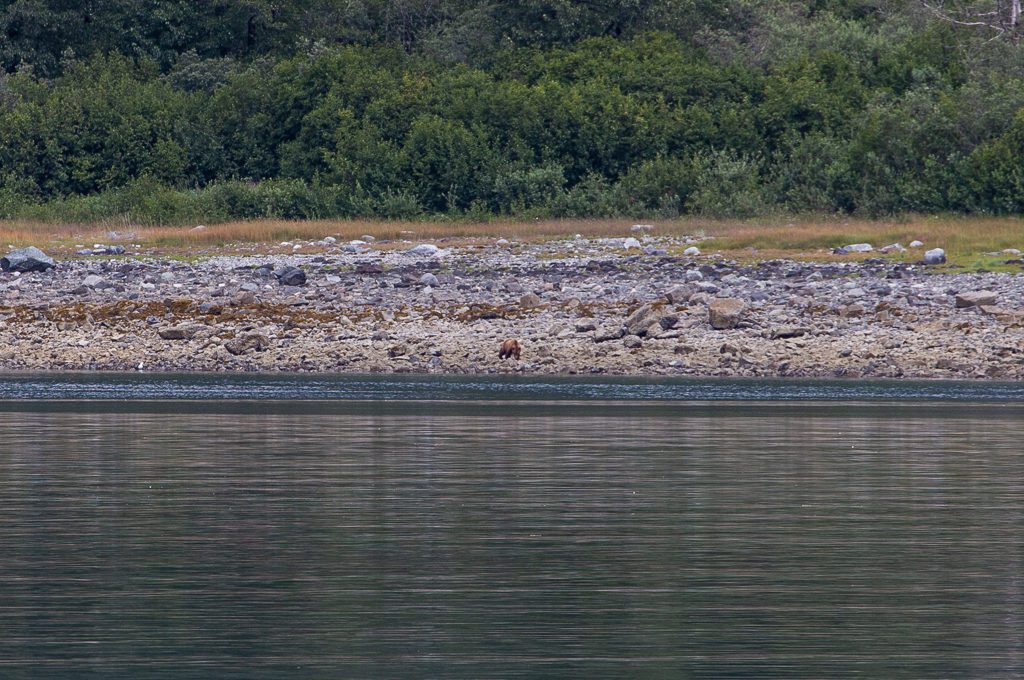
In addition to that, we also had a black bear sighting with a mama and cub and then another black bear sighting near the end of the tour.
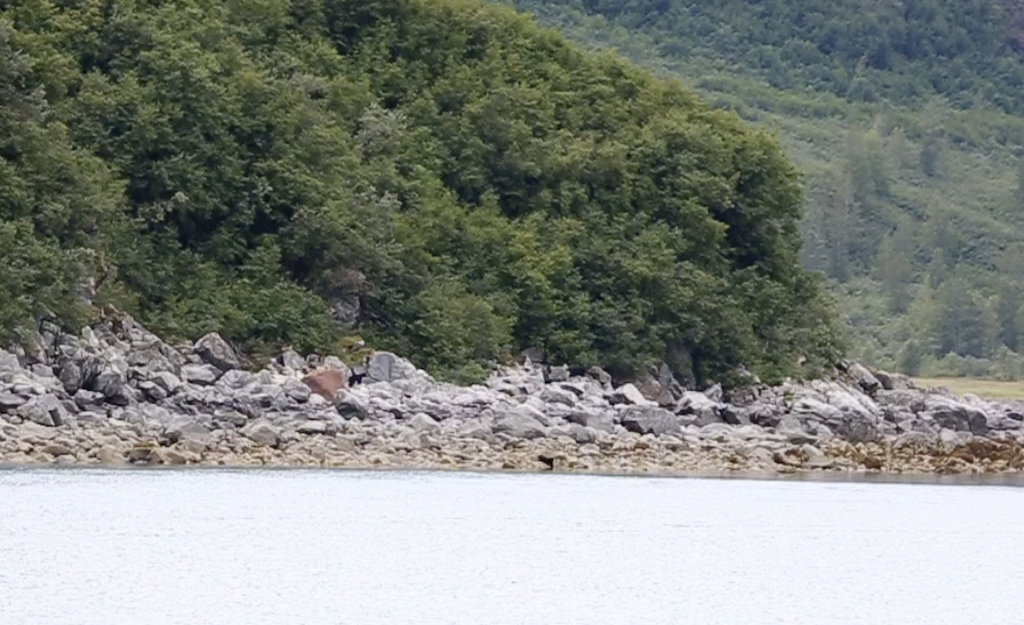
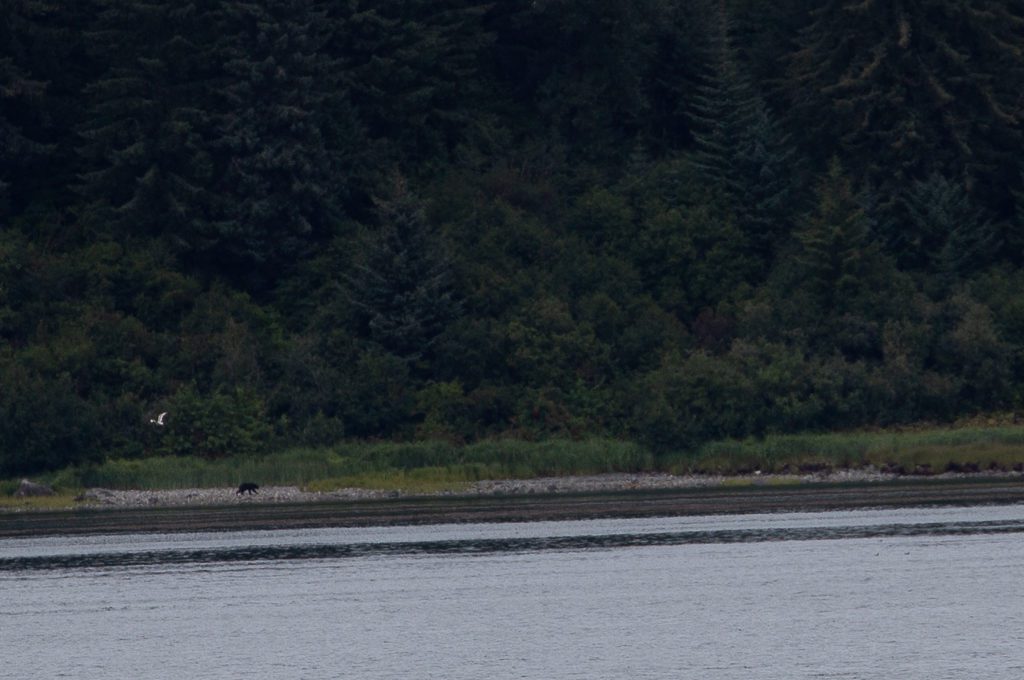
So that was a total of five bears spotted!
The humpback whales were also very active on this day. We probably spotted ~15 to 20 of them.
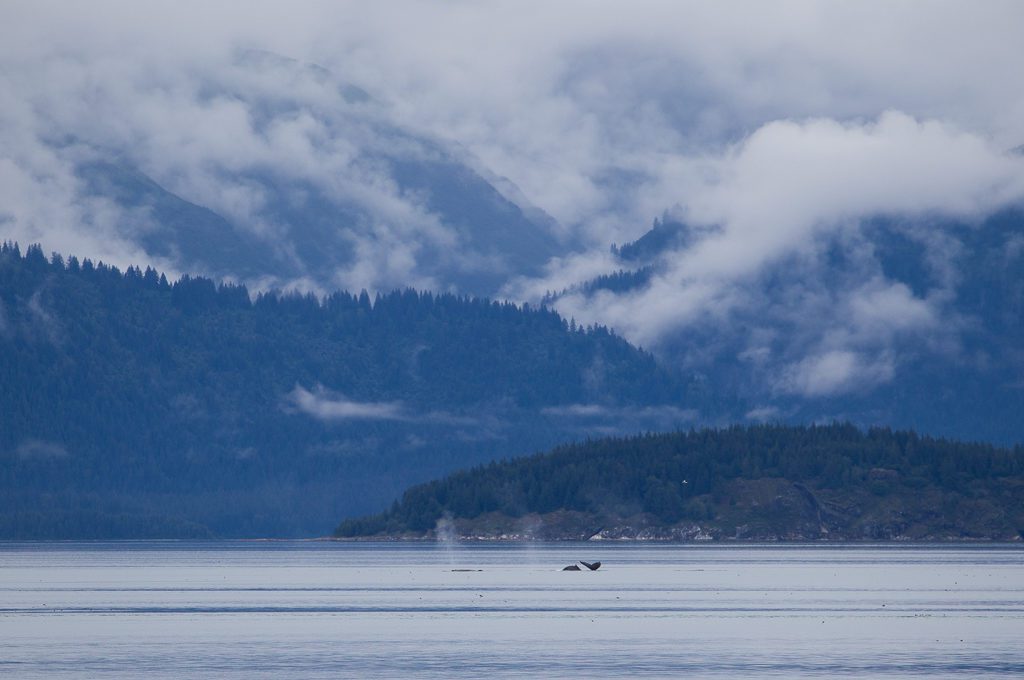
Many times, they were together in pods of 3 to 5 which made it really easy to spot the blowholes.
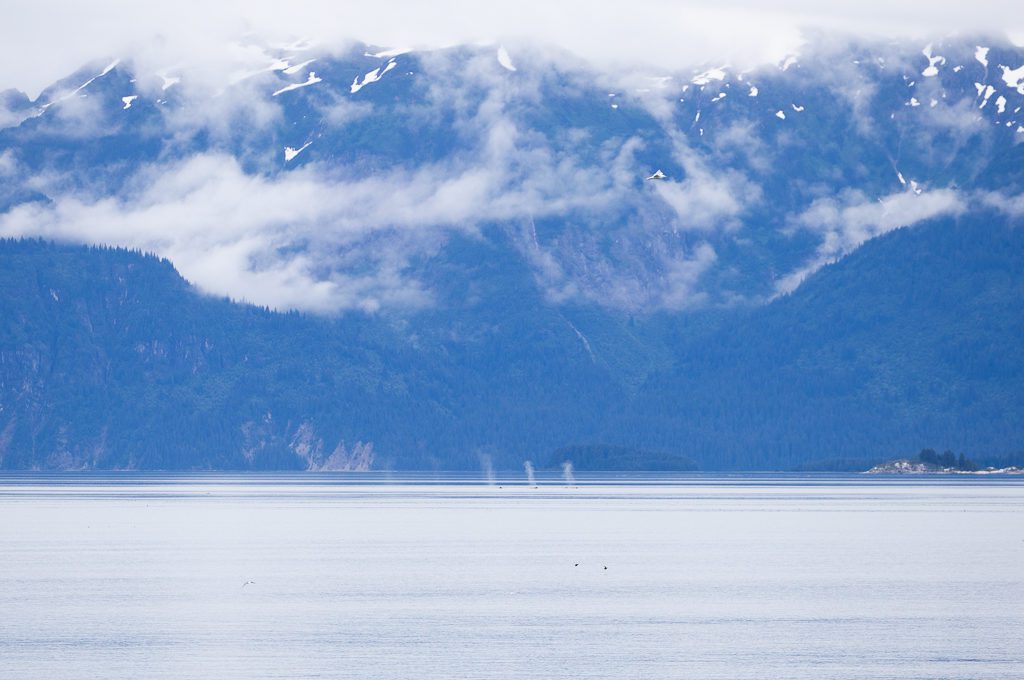
Other times, it was just one solo whale doing its thing.
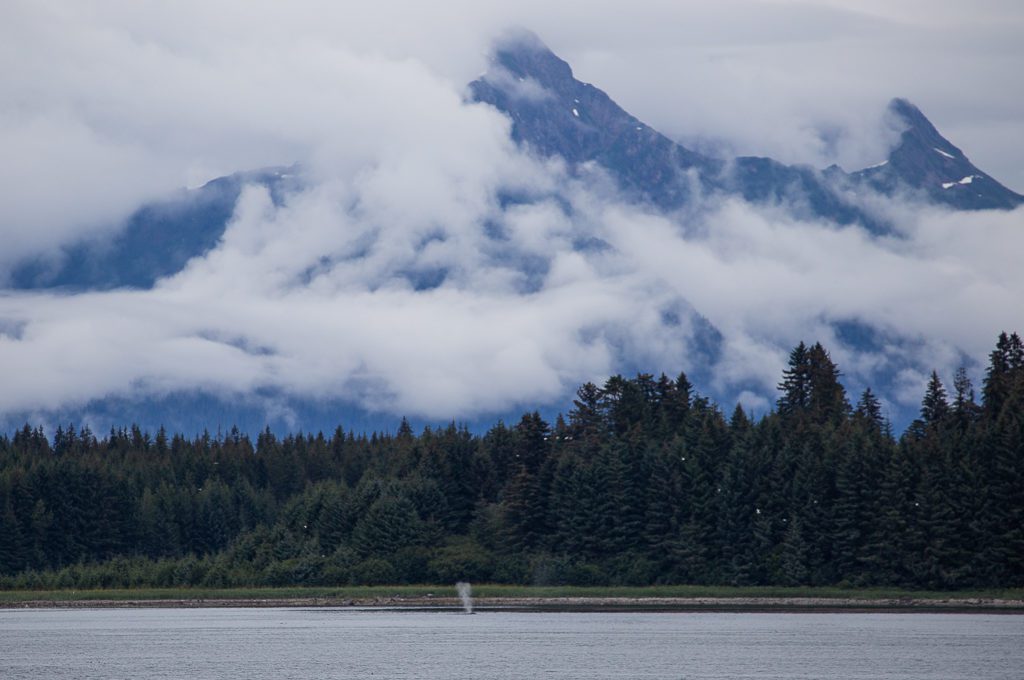
Later on, we did a whale watching tour from Juneau which was nice but we did not spot nearly as many whales on that tour so I really do think this is a prime whale watching location.
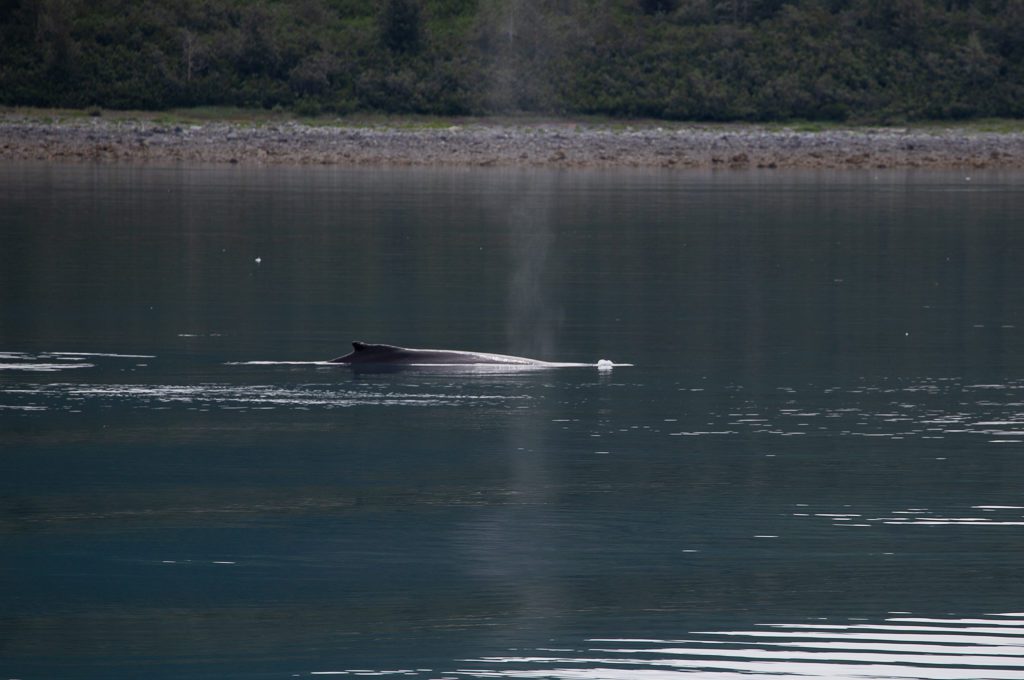
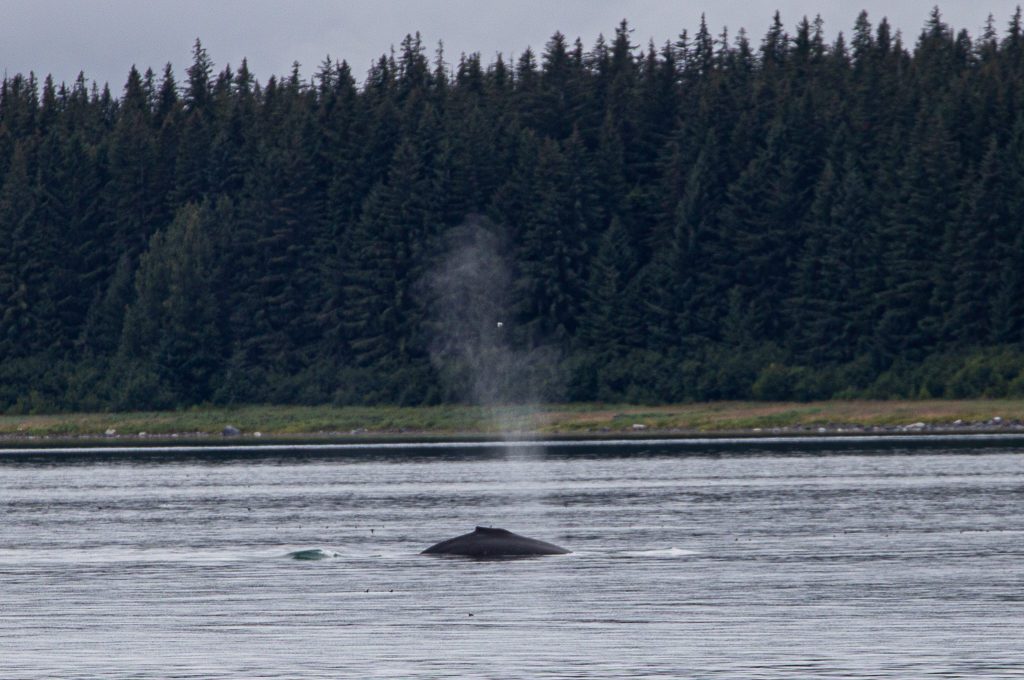
The other fascinating marine life had to be the orcas.
Two of them made an appearance later on in the tour and I was surprised to see that they were relatively close to a couple of the humpback whales.
The killer whales are easy to spot because of their large black dorsal fin. I’ve never seen killer whales before so this was an amazing first encounter for me!
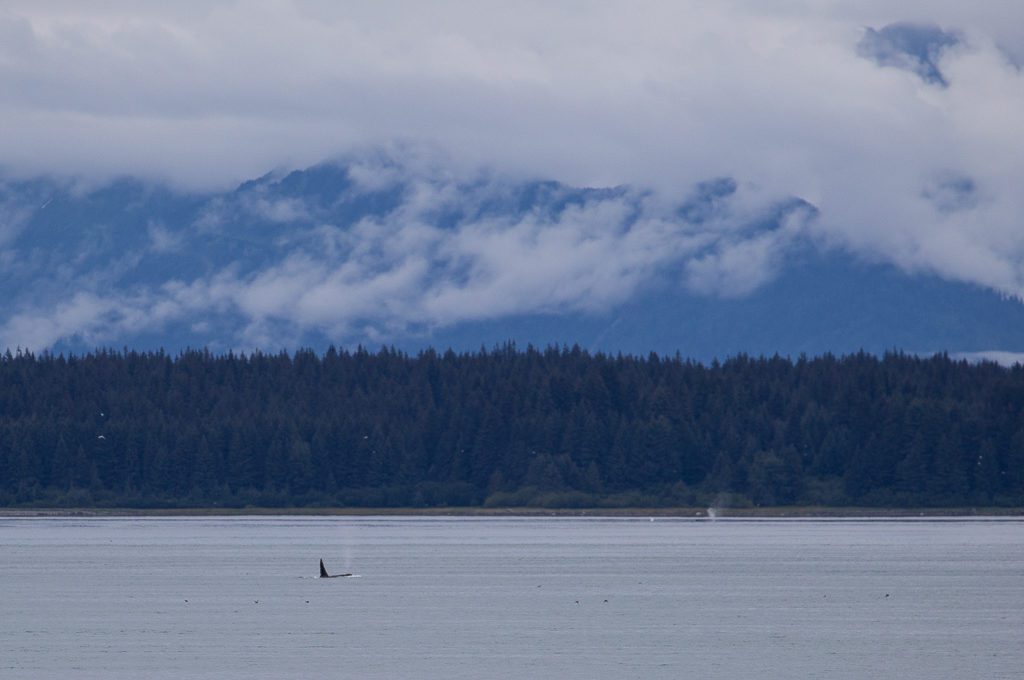
Glaciers
You see a handful of glaciers on your boat tour including several tidewater glaciers, which are glaciers that come down to the surface of the ocean and it’s what makes Glacier Bay National Park special in my opinion.
You’ll know you’re getting close to the glaciers when it starts getting a little colder and you start spotting white chunks of ice drifting in the water.
Some of them are small but others are quite large although I don’t think many or any would be officially classified as icebergs since they don’t need the size requirements.
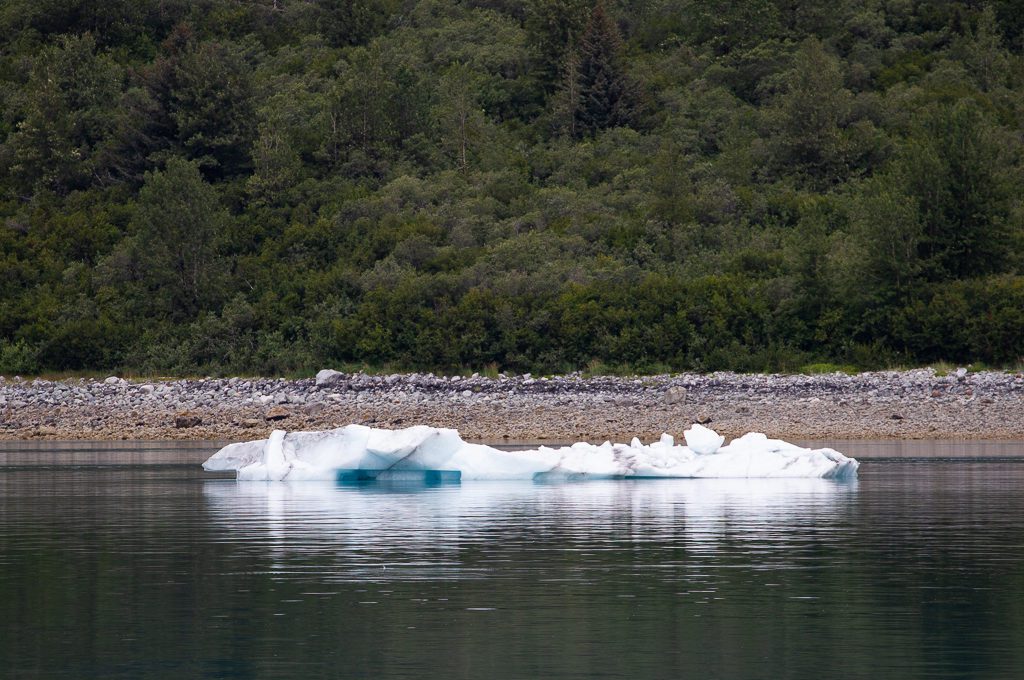
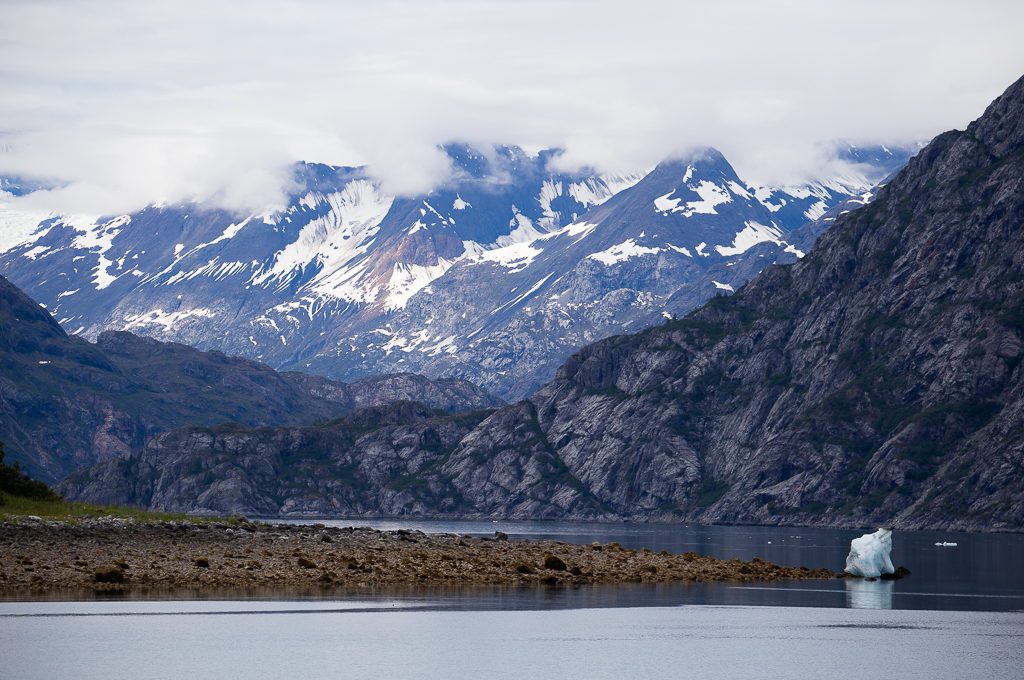
Some animals like to hang out on the big chunks of ice so be sure to scan them for wildlife.
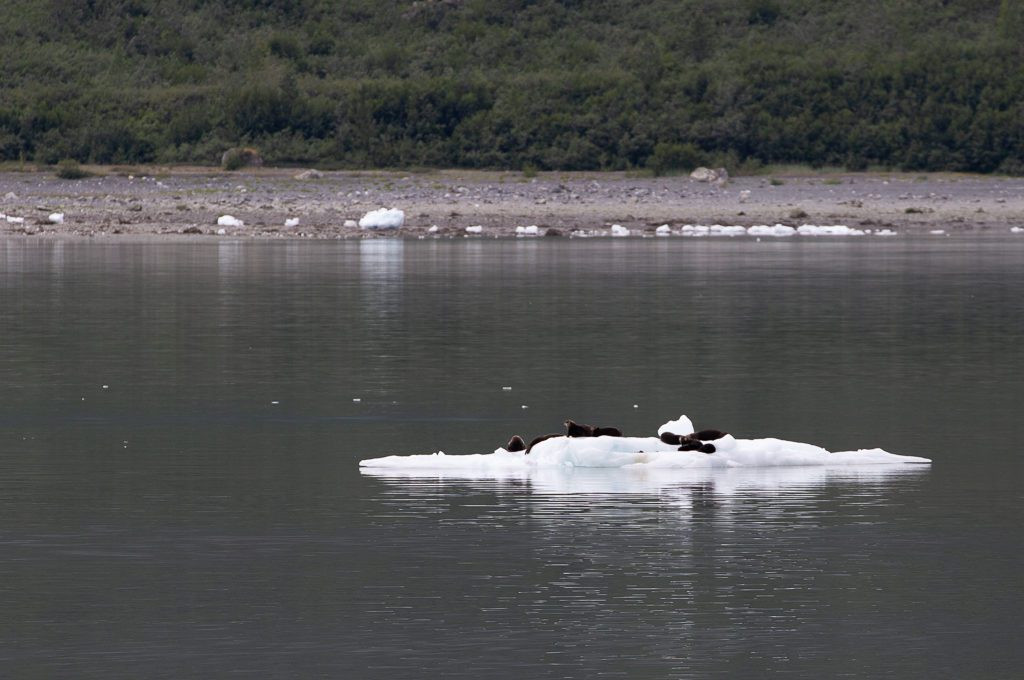
The main glacier attraction on our tour was the 21-mile long Margerie Glacier, found at the northern end of Tarr Inlet.
It’s a stable glacier neither advancing nor receding and about 1 mile wide. If you count the 100 feet of glacier below the water’s surface, the total glacier stands about 350 feet tall. That’s a lot of ice.
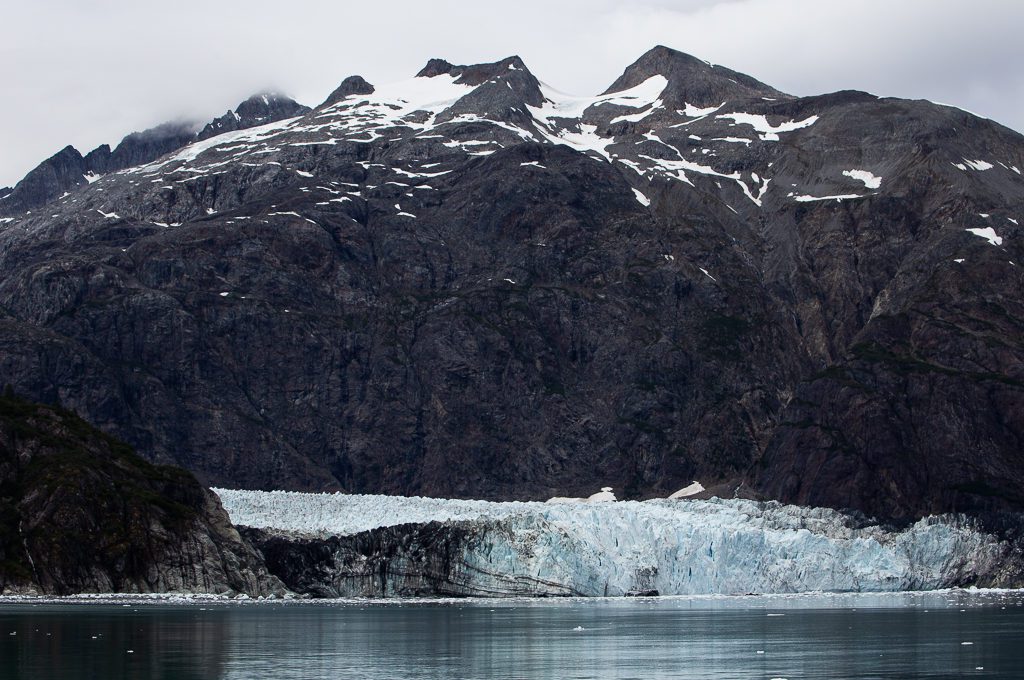
Right when we showed up a small calving event took place.
We stood in amazement as large pieces of glacier break off and crashed into the ocean.
This is one of the most active glaciers for ice calving, so your boat will stop and hang around for a while so that you can witness some of the action. Have your camera ready because it happens fast. If you hear it, it may be too late.
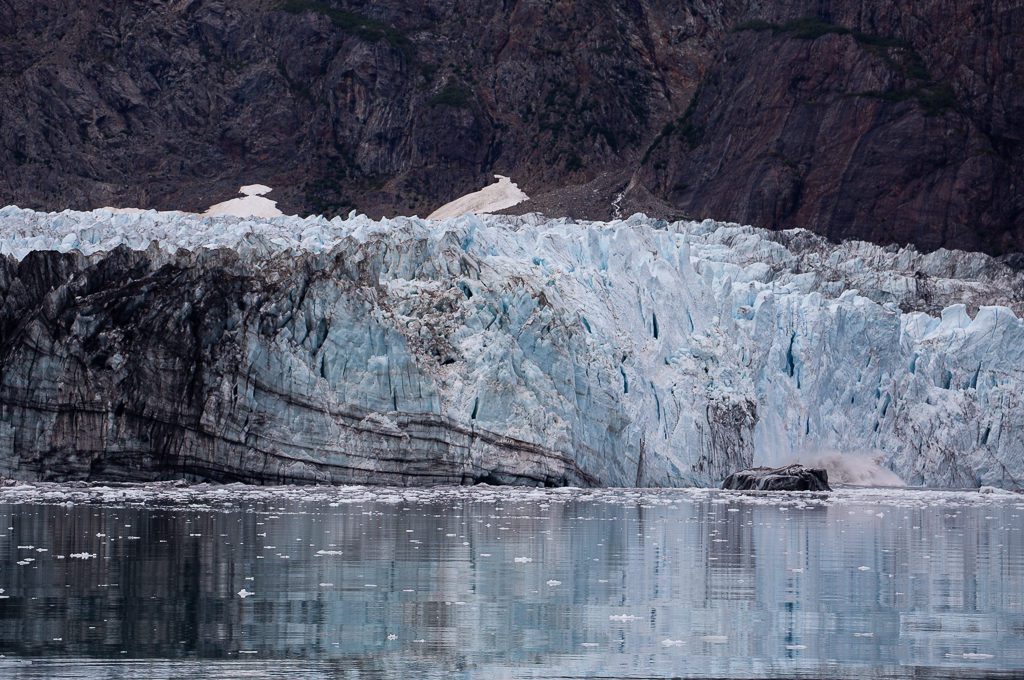
I’d estimate that the “splash” hit about 40 to 50 feet high.
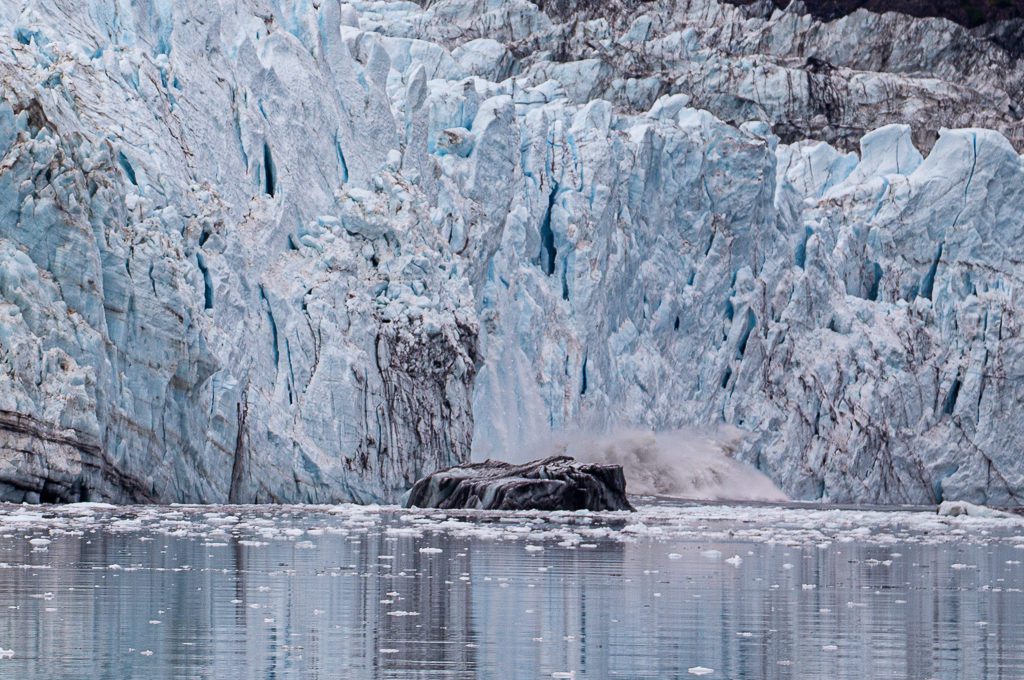
We then waited for another calving event but unfortunately that was all the glacier had offered for us that day.
I will say that I thought we were going to get a little bit closer to the glacier although I understand there is such thing as getting too close.
If you look to the right of the glacier in the photo below, that is the much less photogenic Grand Pacific Glacier and the border with Canada is just beyond that.
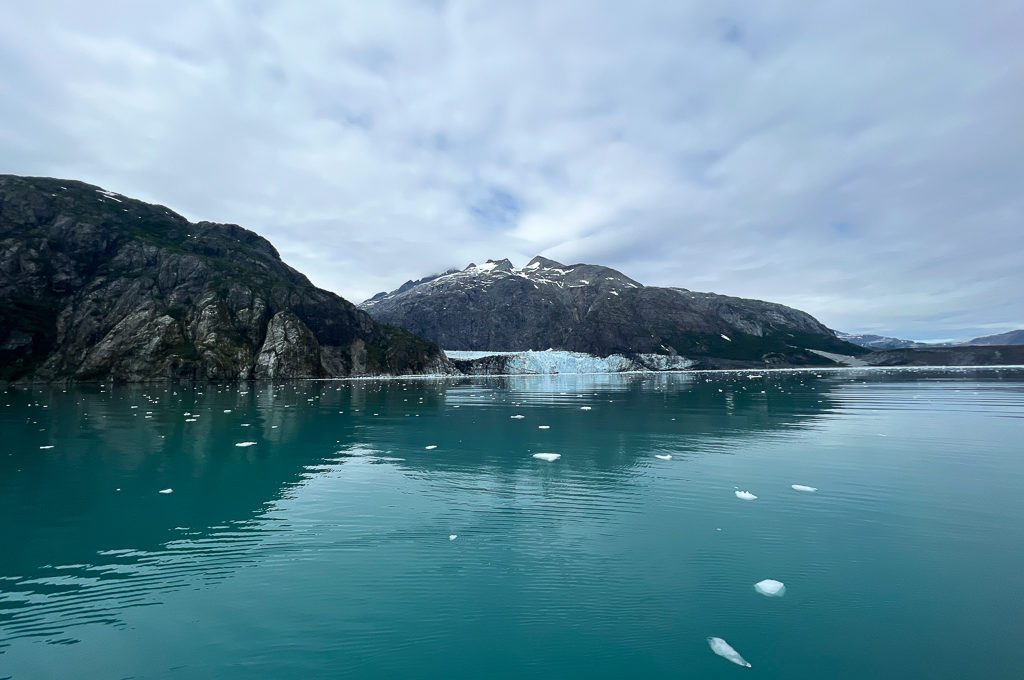
Luckily, we still had a few additional glaciers to spot on the way out like the Lamplugh Glacier. This is a glacier that suffered a massive landslide back in 2015 which now covers a large portion of the glacier. (I don’t think the landslide is viewable from the boat.)
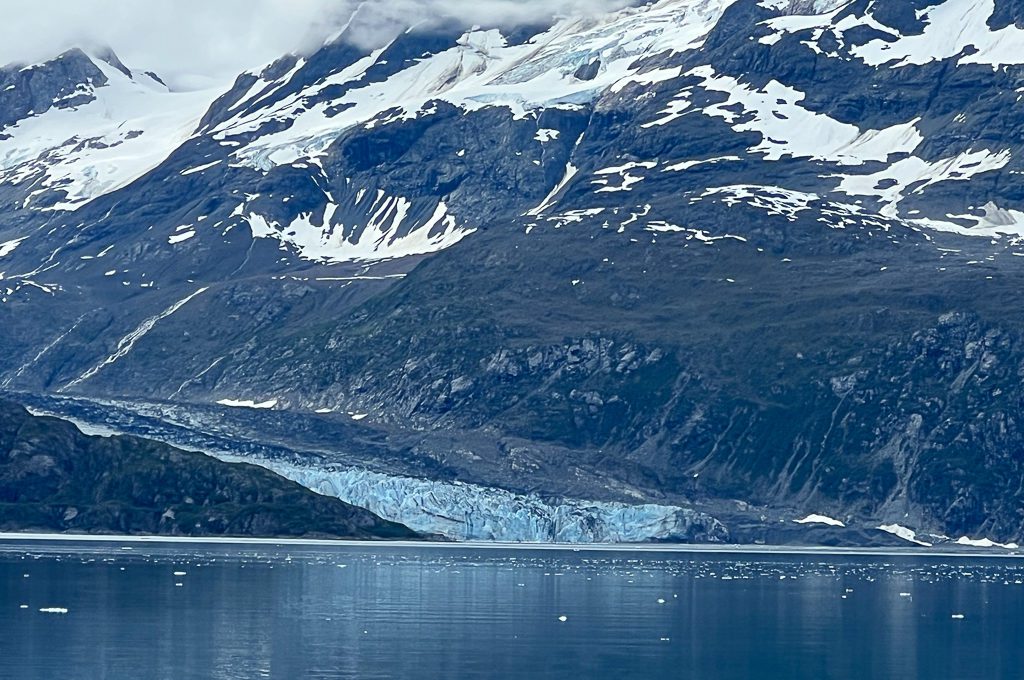
Another beautiful glacier was the 11-mile-long Reid Glacier.
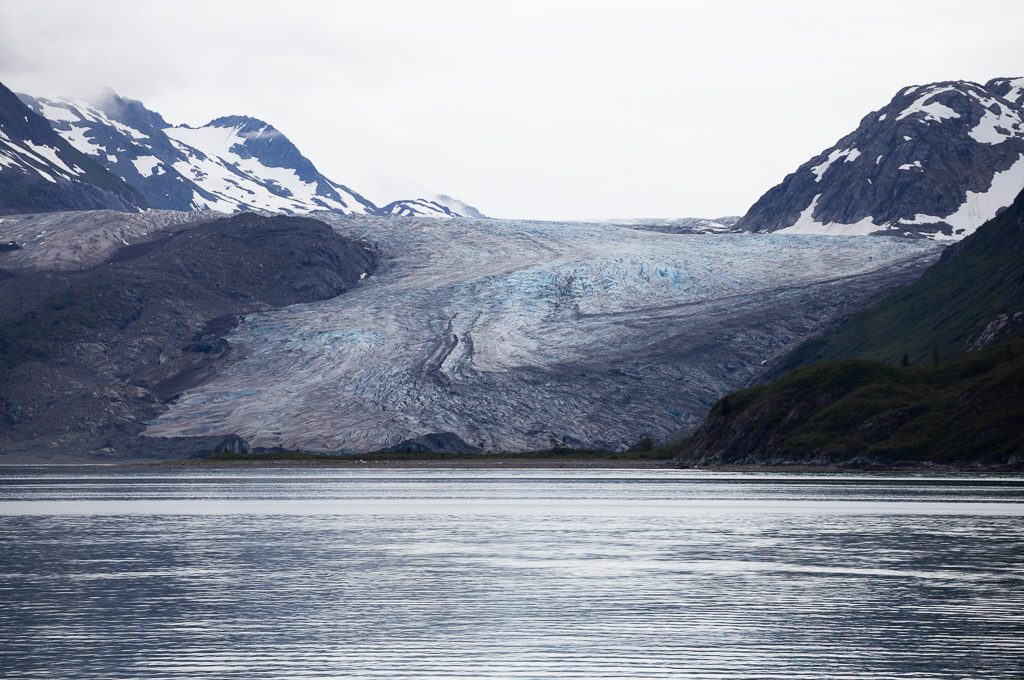
Sometimes, you’re not exactly sure as to what glacier you’re looking at but all you know is that it’s quite a striking scene!
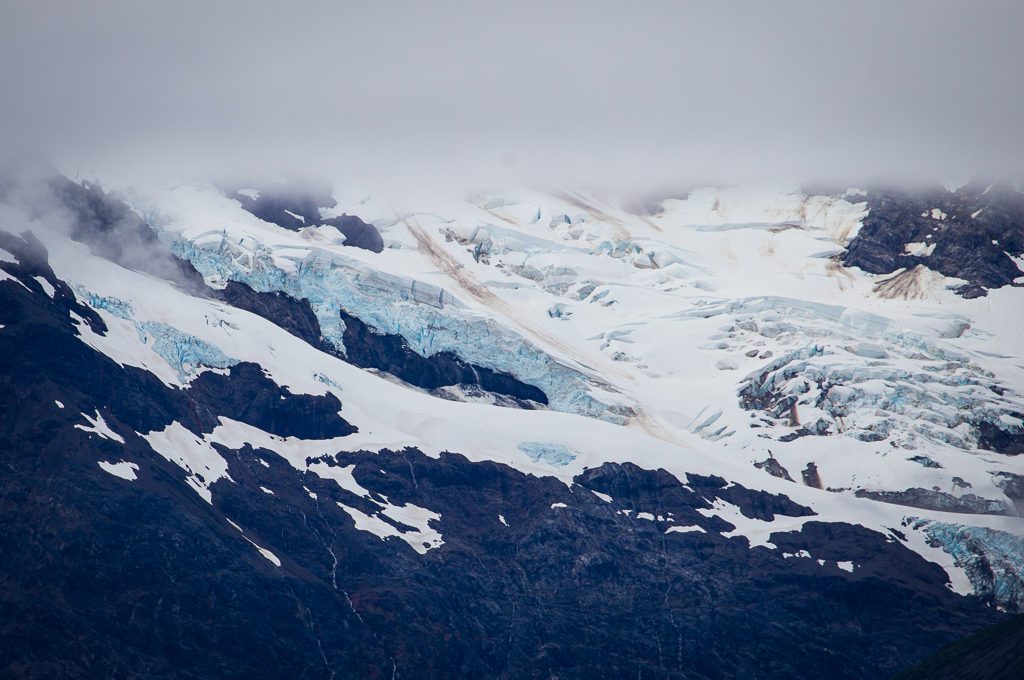
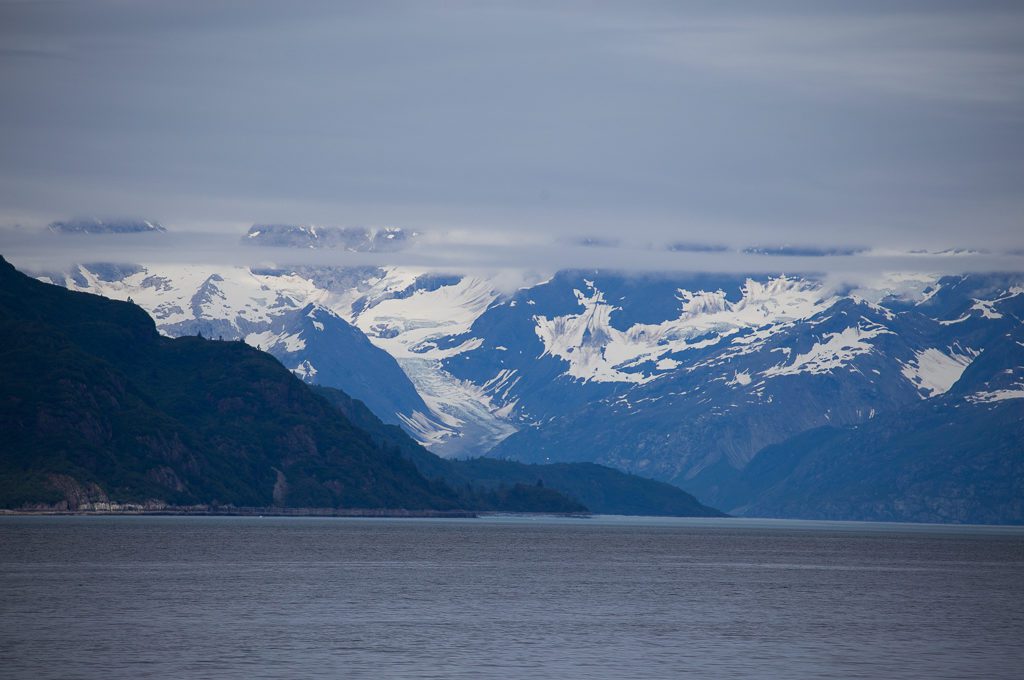
Somehow a piece of ice landed on our boat!
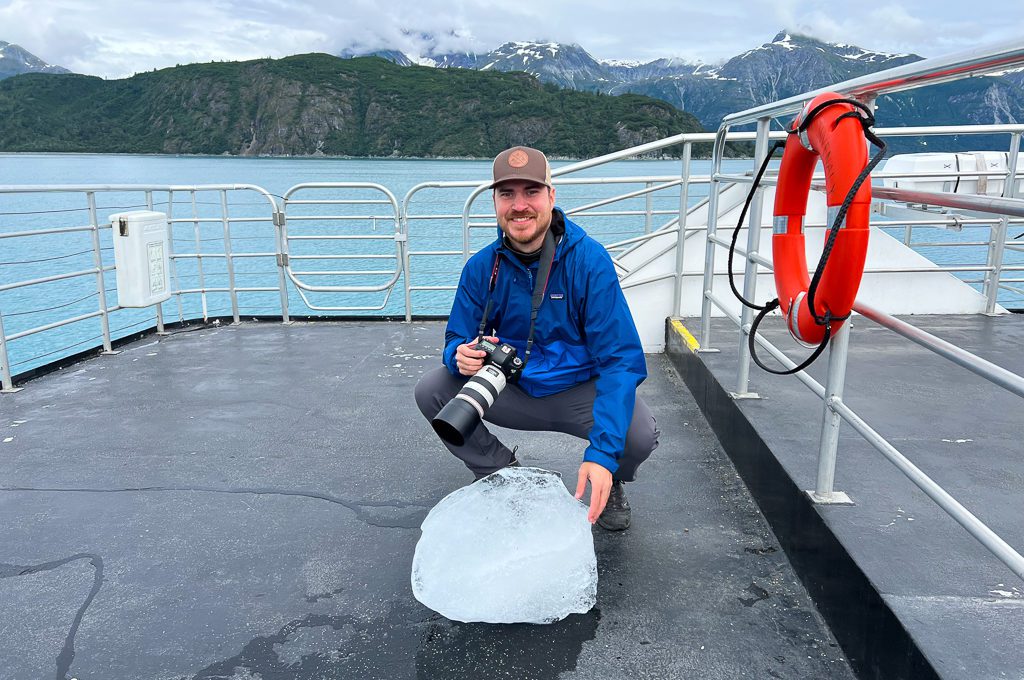
Lunch
Included in your tour is a complimentary lunch consisting of a sandwich (turkey, roast beef, ham), potato chips, snacks, and bottled water. Veggie options are available, too.
It’s very basic but you (hopefully) did not come here for the food….
Whenever lunch is served, a line will form downstairs that can get quite long although it moves relatively quickly.
So my advice would be to get moving as soon as they announce lunch so that you can avoid waiting in line. However, if you’re not hungry I believe you can pick up lunch items later on.
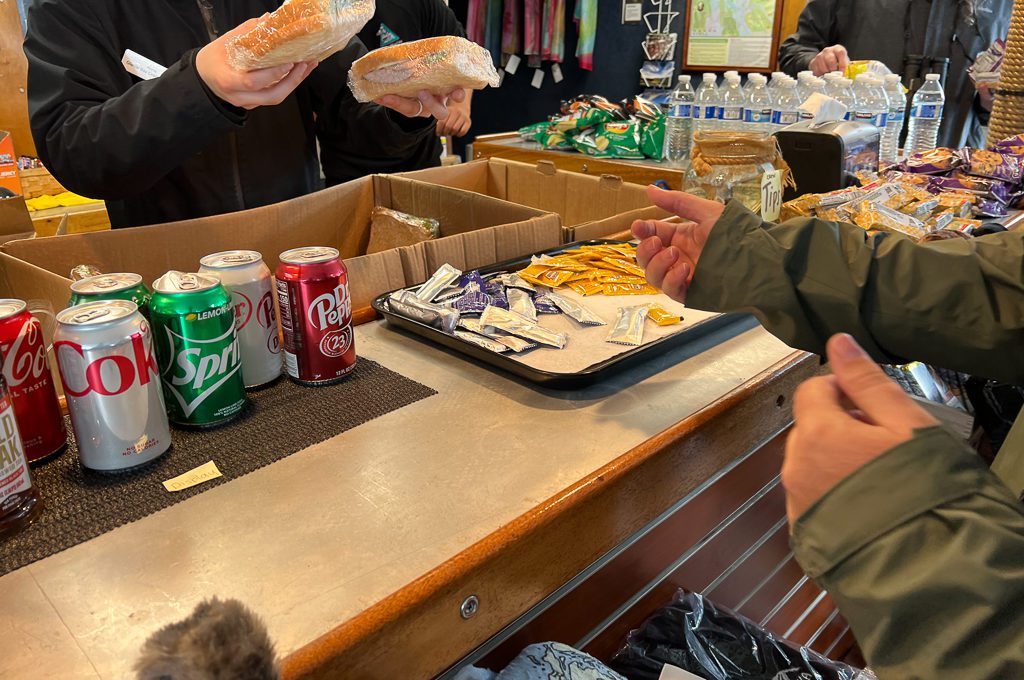
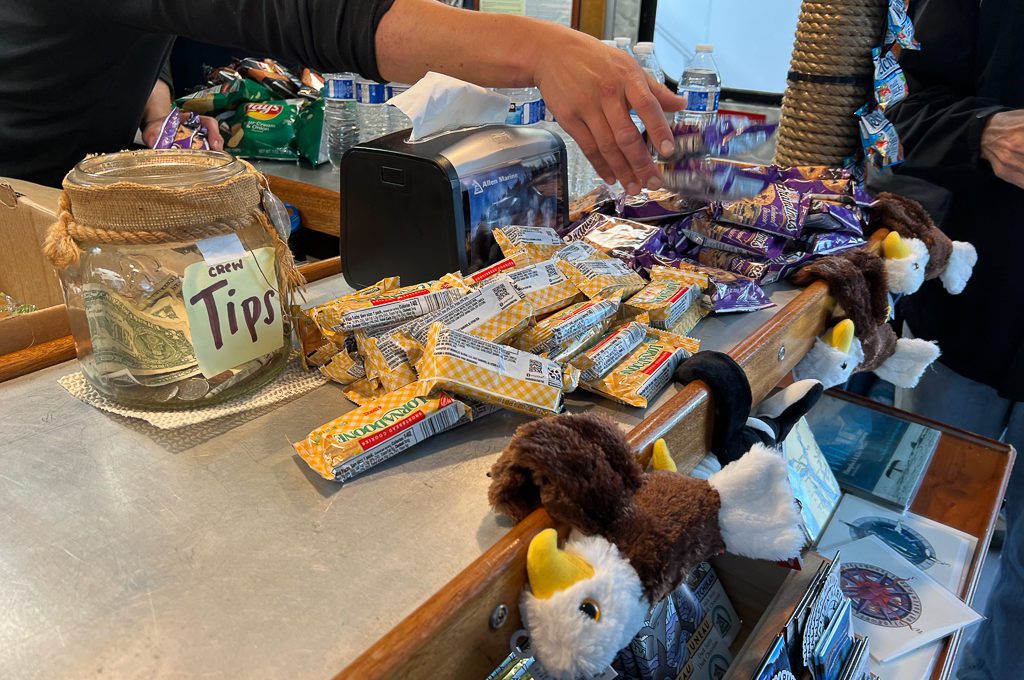
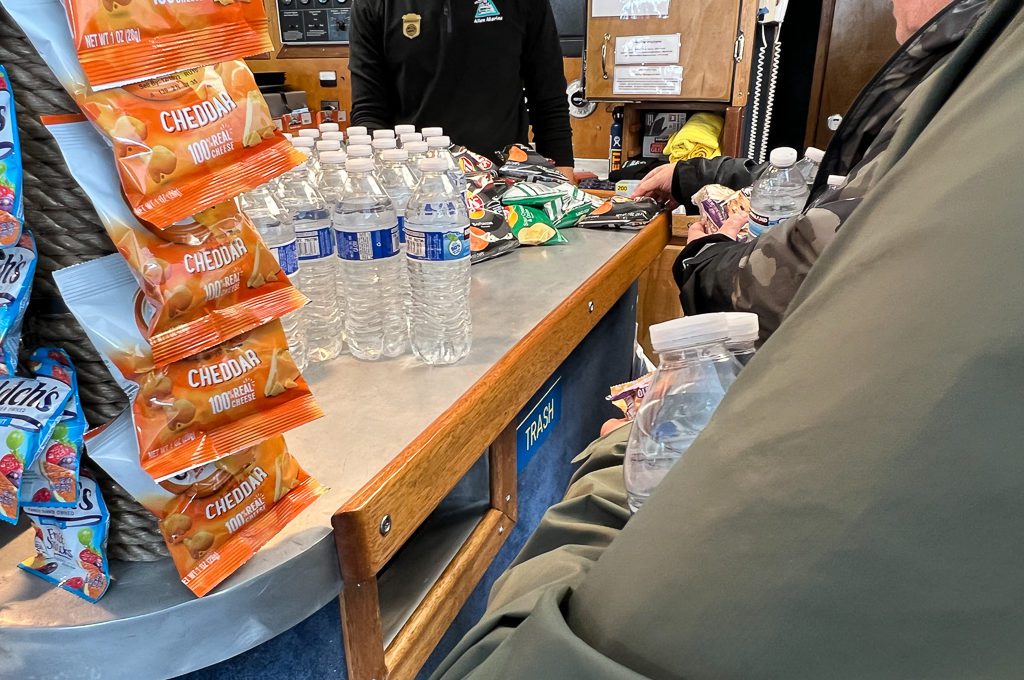
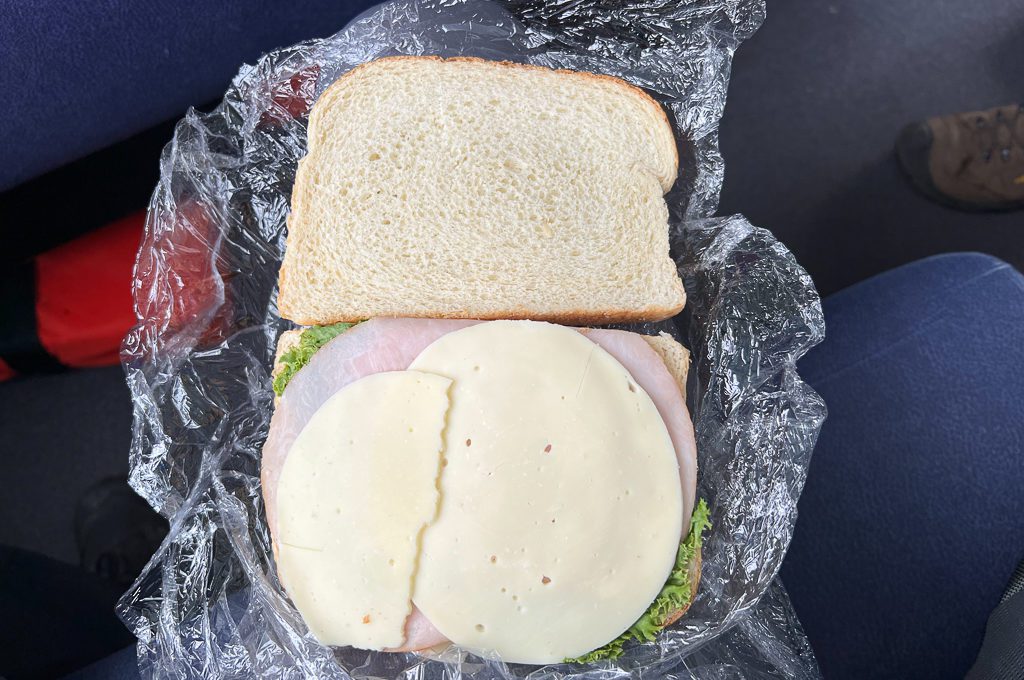
What to wear
If you plan on spending a lot of time inside the cabin and only coming out to check out some sites then all you probably need is a standard waterproof jacket with an insulating layer underneath. A beanie or some type of hat and gloves would also be nice.
But if you’re planning on spending the vast majority of your time outside like I did you probably want an additional layer of protection. That’s because when you’re moving the wind chill can get you shivering real fast.
I stayed pretty warm utilizing a balaclava facemask which really helped with the wind on the upper deck.
I pulled my waterproof jacket hood over my head and switched between a beanie and hat to keep me warm. Underneath my jacket I had a pull over fleece which worked pretty well although at times I was tempted to put on my puffer jacket.
When the cold would really become an issue I would head inside for a few minutes to warm up and grab a glass of tea or hot chocolate. Then I would be right back out.
When outside on the upper deck, the warmest spot is directly behind the cabin because you are sheltered from the wind. You can still peak around the corner to get your photographs or views.
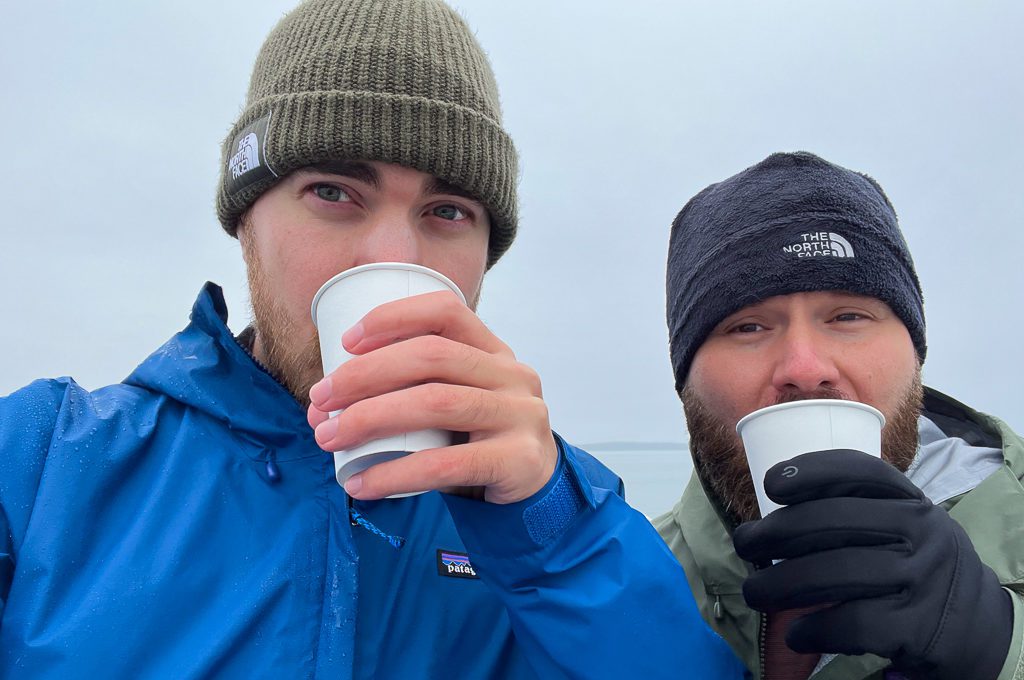
How to spot wildlife
If you’ve never been on a tour like this before you should know that spotting wildlife is not always so easy.
First, let’s state the obvious: there is no guarantee of wildlife showing up although some animals like otters, seals, and whales seem like they are virtually guaranteed in season.
Second, it’s really helpful to have proper expectations when going on a tour like this.
Many of the animals you’ll be seeing will appear much smaller than you would think when they are perched hundreds of feet high on rocky hills or when they’re strolling along the beach hundreds of yards away.
So here are some good tips to consider:
Get some binoculars
In my opinion, binoculars are a necessity on a trip like this. You don’t have to break the bank to get a decent pair of binoculars, either. Look for binoculars with a magnification of either 8 or 10, and a lens size of 40 or 42. Here is a highly rated pair you can find on Amazon.
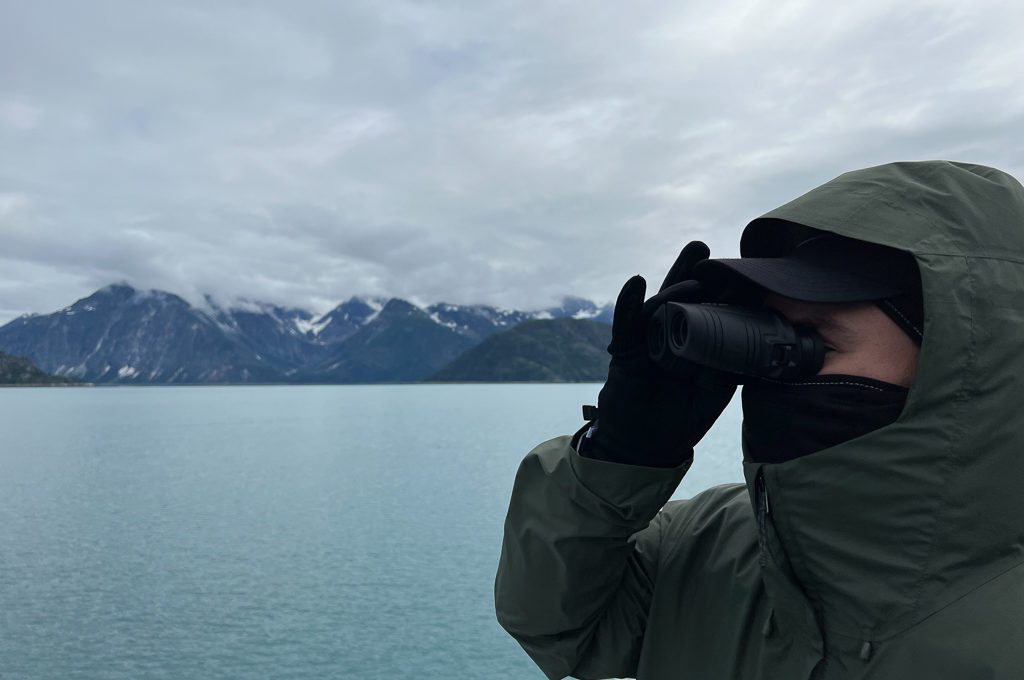
Pay attention to the rangers
Listen to the park rangers and they will tell you which direction to look (e.g., 3 o’clock). They are also good about helping you locate objects by following mountain ridges, tree patches, etc.
Remember port side is the left side of the boat and starboard is the right side.
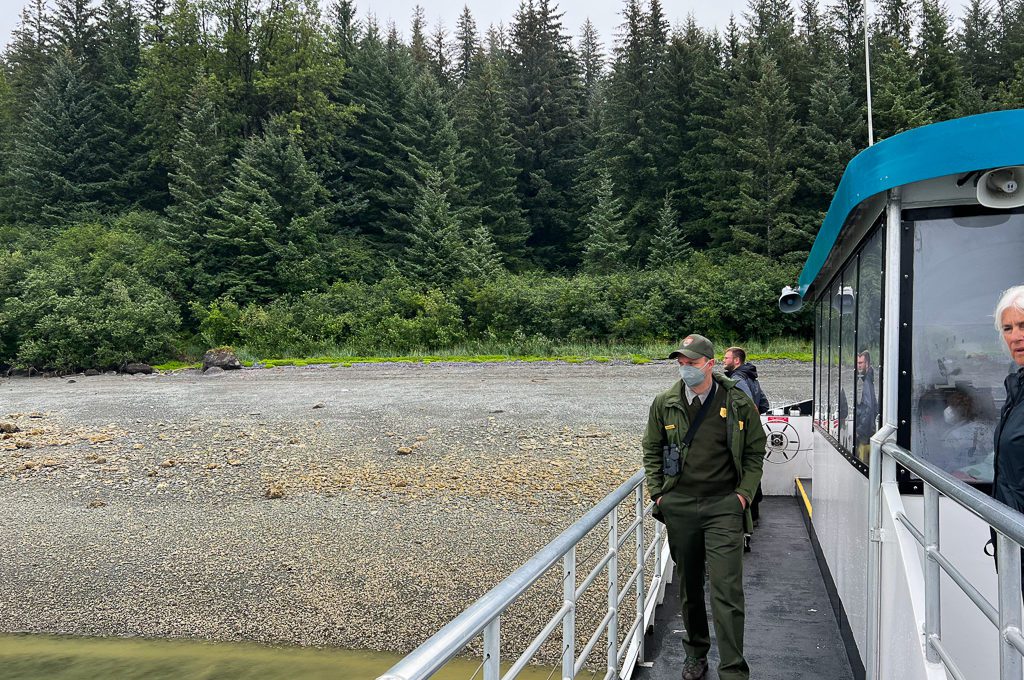
Be quick
You need to be quick because the boat can’t always slow down in time and sometimes you only have a few seconds to see something. Auto focus will really help you out here.
If you’re recording video, just start slowly zooming in towards the direction everyone is pointing and you might be able to capture the wildlife if your naked eye is struggling to see it.
Move about
I regularly switched sides on the boat to maximize my odds of seeing wildlife.
Unless I was specifically looking for whales, I usually focused on the side nearest to the shore since that is where you find bears, moose, etc.
Don’t give up!
On several occasions I struggled to find whatever animal was spotted and just before I was about to give up, there it was! Don’t give up on searching for the wildlife until there’s absolutely no chance to see it.
Camera gear
This was my first true attempt at wildlife photography.
It was also my first time using a 300mm lens, so this was a pretty big learning experience for me. A true trial by ice one might say….
I feel like a 300mm is good enough to get some great shots of some of the wildlife whenever they are relatively close, especially things like the otters and some whales.
But I really think 400mm+ is where it’s at.
A faster lens with a large aperture is going to be ideal although those can get expensive. Consider renting or purchasing a used lens on Amazon/Ebay to save a lot of money.
At least one person had a tripod so lugging around a huge lens is a possibility if you’re willing to put up with it. A monopod would probably be better, though.
And if you don’t have a fancy DSLR, you can still get good footage with something like an iPhone — you just won’t be able to capture the fine details on objects far away.
Taking in all the scenery
In your quest to spot all the wildlife you can and to catch some calving ice at the glaciers, you might get distracted enough to forget to take in all of the scenery.
There are nonstop photo opportunities throughout the tour so be sure to dedicate some time for some landscape photography.
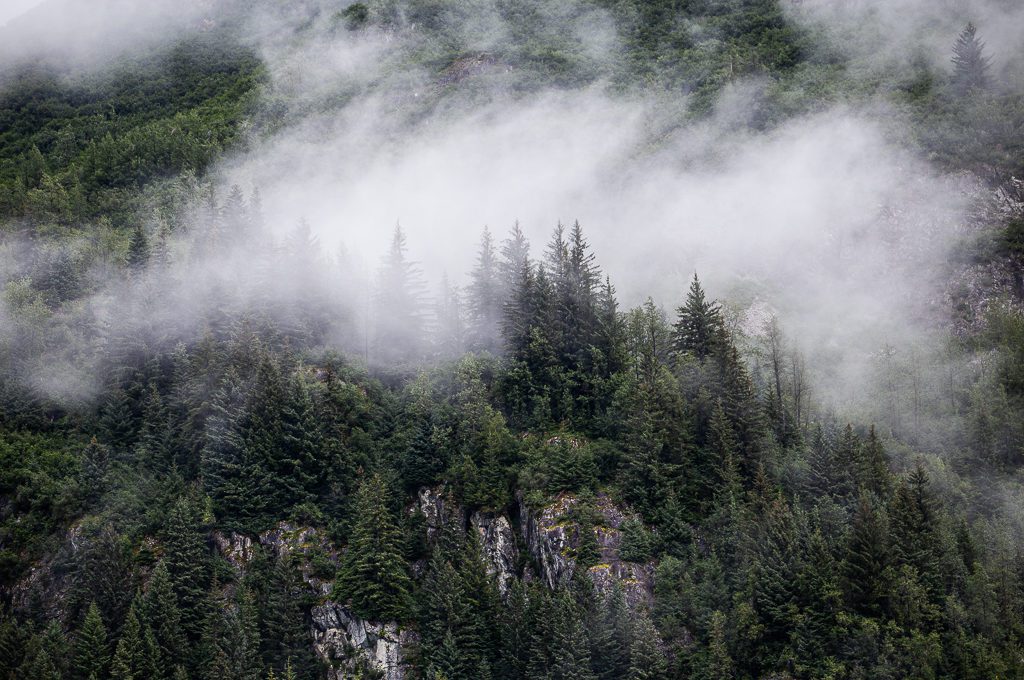
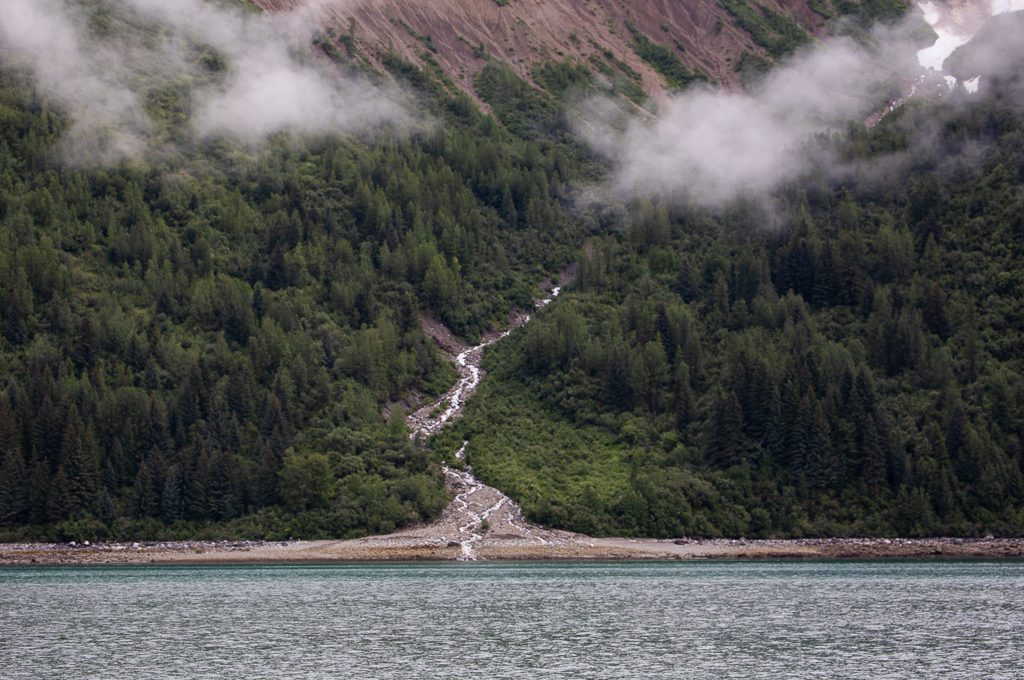
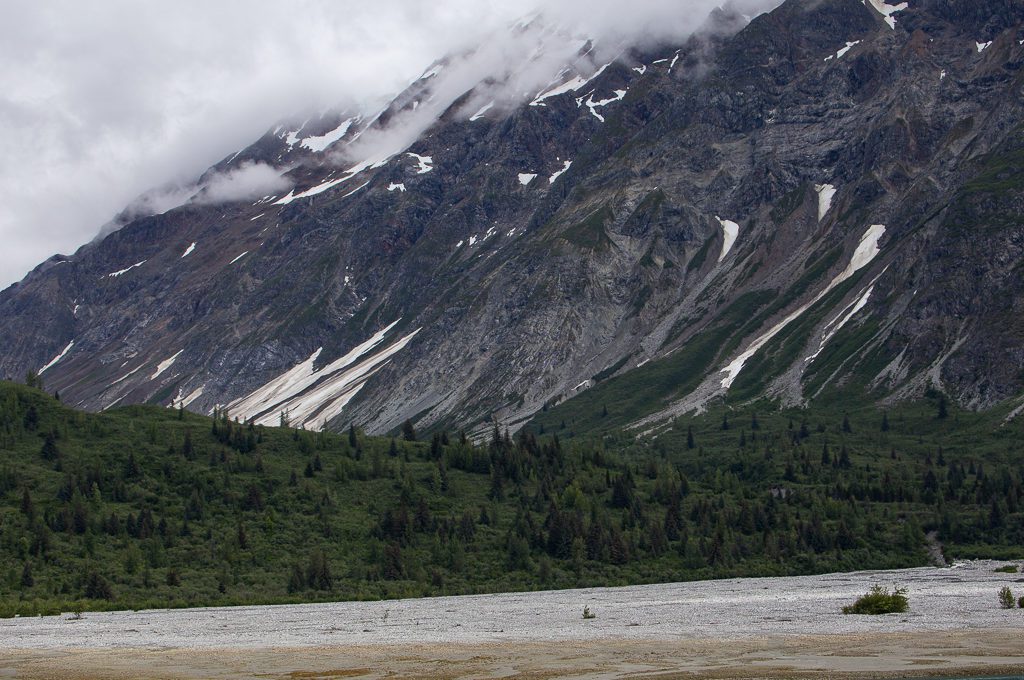
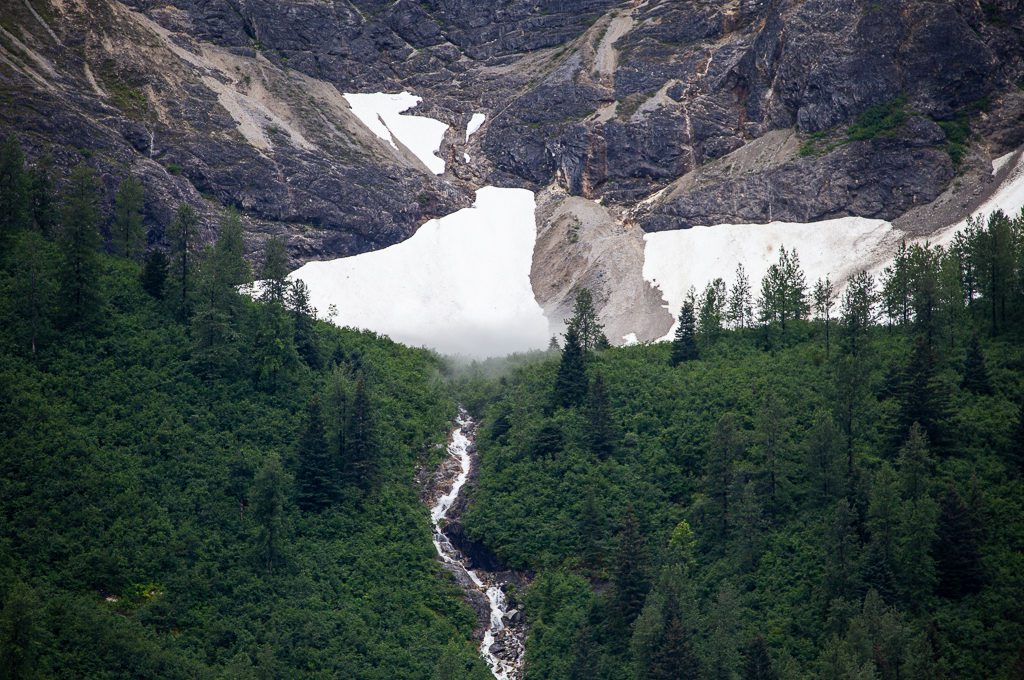
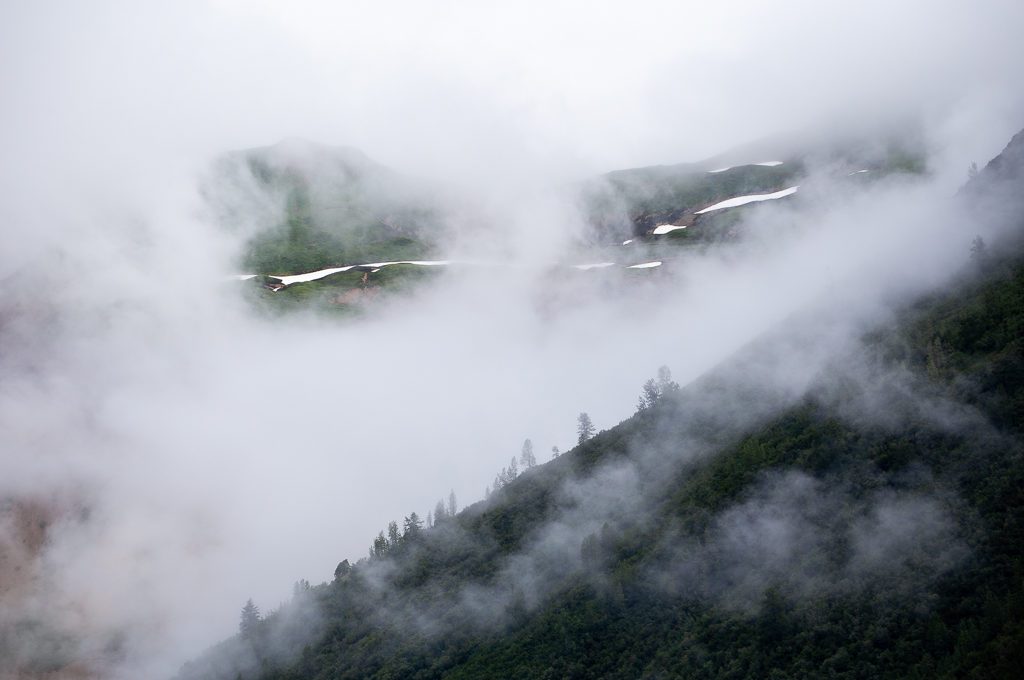
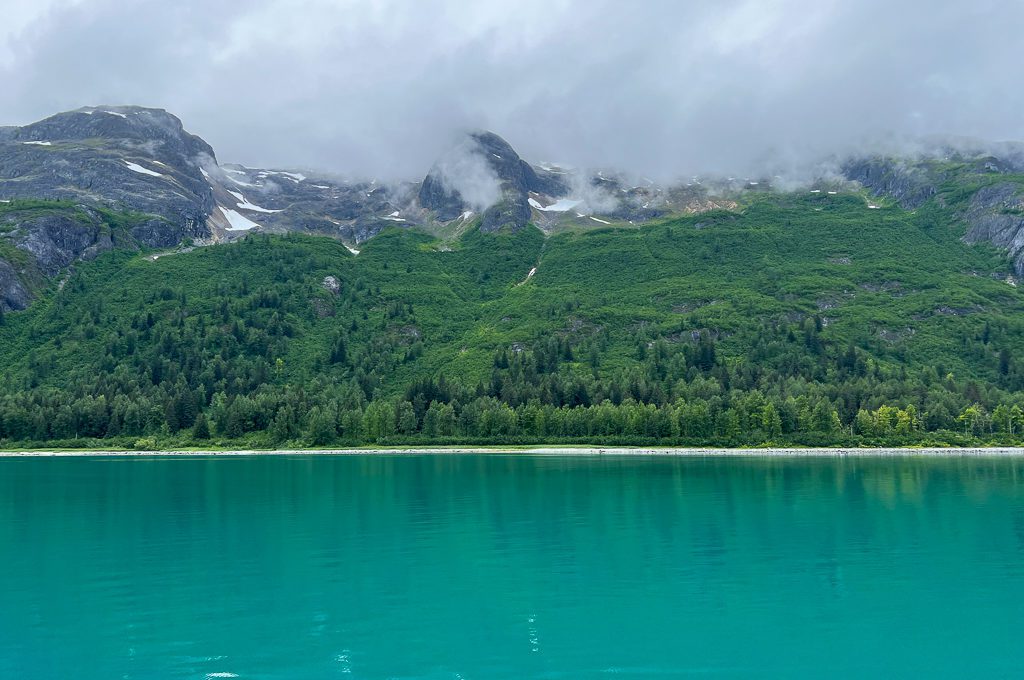
They limit the amount of cruise ships in the bay every day so you’ll be delighted to know that it’s not a madhouse out there with cruise ships.
Honestly, I thought it was pretty cool to view the cruise ships because they make for good photos and provide great scale for the landscape. Here are a few shots I got.
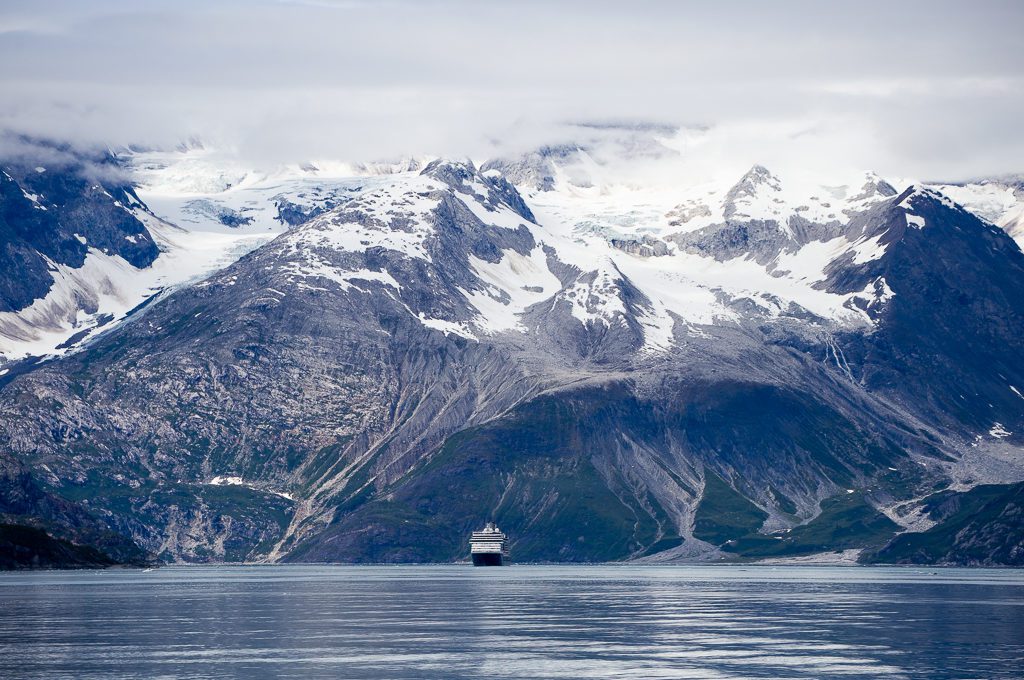
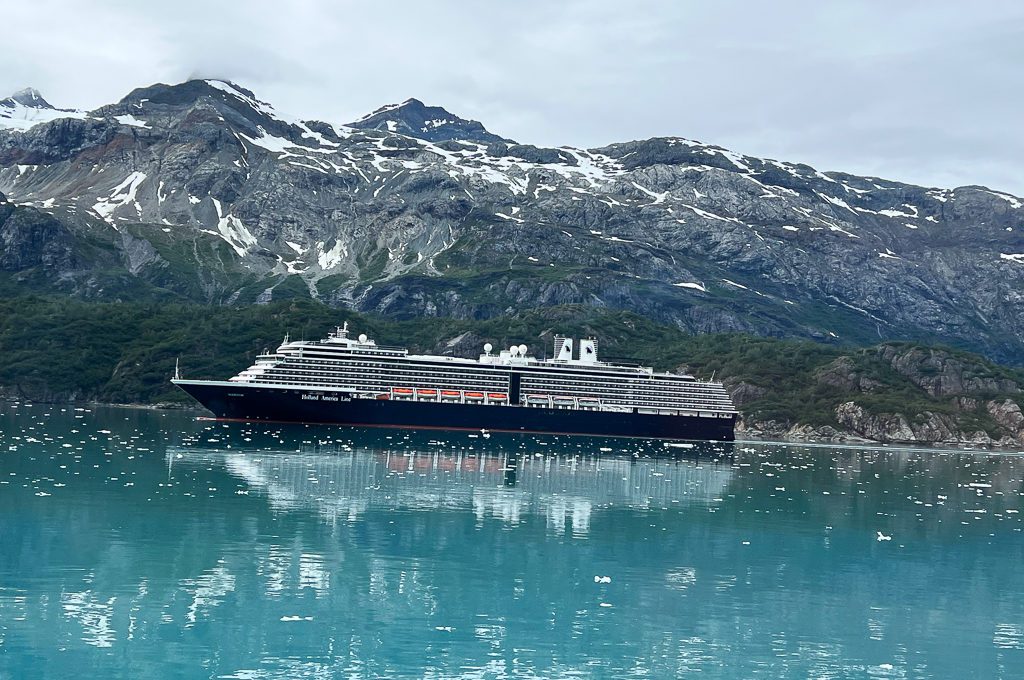
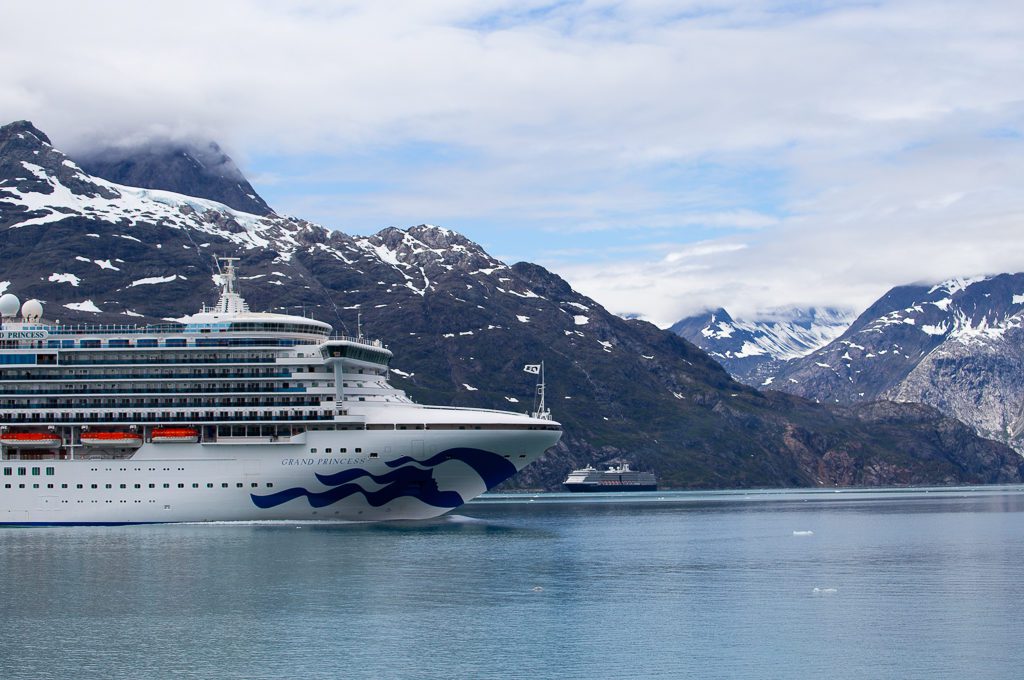
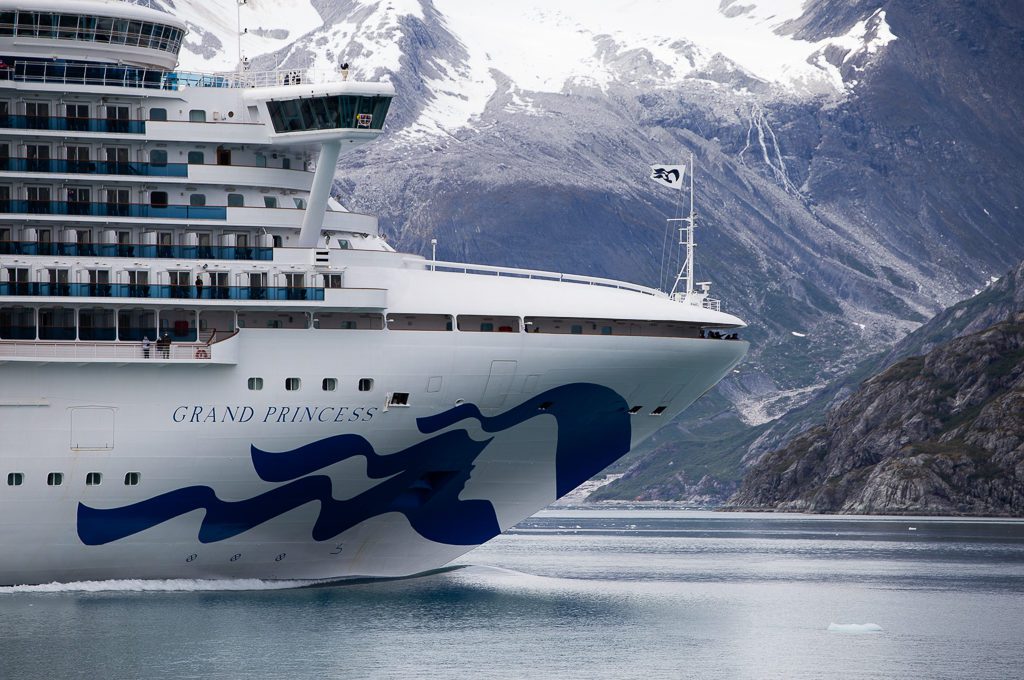
Final word
The Glacier Bay day tour is one of the best ways to spend an entire day in Glacier Bay National Park. The experience surpassed my expectations in almost every regard. You’ll be blown away by the scenery and constantly amazed by the wildlife appearances.
Daniel Gillaspia is the Founder of UponArriving.com and the credit card app, WalletFlo. He is a former attorney turned travel expert covering destinations along with TSA, airline, and hotel policies. Since 2014, his content has been featured in publications such as National Geographic, Smithsonian Magazine, and CNBC. Read my bio.

